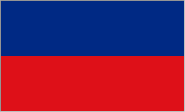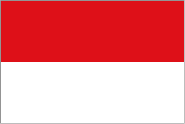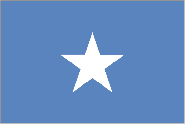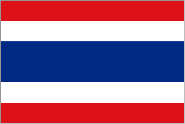Coastal Zone Development
Taxonomy Term List
Enhancing Research and Policy Linkages to Advance National Adaptation Planning in Guinea
The project helped Guinea to increase its capacity to adapt to climate change impacts by strengthening linkages between research policy, mainstreaming climate change adaptation into sectoral and local planning and budgeting, and advancing national funding mechanisms and private sector engagement. The project addressed the main barriers that were identified during an earlier stocktaking exercise, including the lack of links between research and policymaking, weak measurement, evaluation and funding mechanisms, and insufficient private sector engagement in adaptation efforts.
The main objective of the project “Enhancing research and policy linkages to advance National Adaptation Planning in Guinea” was to increase Guinea’s adaptive capacity to cope with climate change impacts. The project established research to support informed decision-making and capture opportunities that arise both from public funding and the private sector.
Guinea is experiencing negative socio-economic impacts of climate change due to its exposure to sea level rise, droughts, and flooding. Its Nationally Determined Contribution (NDC), submitted in 2015 and revised in 2021, outlines climate change adaptation priorities, such as the preservation and restoration of water resources, protection of ecosystems particularly in coastal zones, and ensuring food security of rural communities.
Based on stakeholder consultations and stocktaking conducted in 2016 and 2018, the main barriers to climate change adaptation mainstreaming and financing were identified as (1) the absence of links connecting research to policy to inform decision-making processes; (2) weaknesses in and/or fragmentation of existing coordination, monitoring & evaluation (M&E), and funding mechanisms; (3) the absence of adaptation in the Planning-Programming-Budgeting-Monitoring and Evaluation (PPBSE) procedures; and (4) lack of private sector involvement in the adaptation landscape.
The project aims to remove these barriers by achieving the following objectives under the three main outcomes:
1. Research-policy linkages and knowledgebase are strengthened to inform adaptation planning and decision-making:
- Establish research-policy linkages to support the NAP (National Adaptation Plan) formulation and implementation;
- Develop a climate risks and vulnerability evidence base that informs the identification and prioritization of adaptation options in the sectors of agriculture, livestock, and forestry.
2. Climate change adaptation mainstreaming is facilitated by reinforcing coordination and M&E mechanisms:
- Operationalize a sustained and suitable coordination mechanism to support mid and long-term adaptation;
- Enhance adaptation mainstreaming into sectoral and local planning and budgeting;
- Establish adaptation M&E mechanisms in adherence with the existing national M&E system.
3. A national funding mechanism and private sector engagement are expanded to support adaptation financing:
- Support the Environmental Safeguard Fund (FSE) mechanism to raise awareness on funding sources and expand mandate for the financing of adaptation actions;
- Enhance the mining sector’s engagement on adaptation and climate financing.
Furthermore, a follow-up project was proposed to fill gaps identified through this phase and develop Guinea’s NAP document. The results of the current project have informed the proposal, consolidating existing climate risks and vulnerability assessments and prioritization of adaptation options in the priority sectors of agriculture, livestock, forestry, coastal and water resources. The planned second phase will further consider promoting sustainable cities, clean cities, and blue economy for which the national strategy is currently being developed.
In addition to the main project implementing partner, the Ministry of Environment, Water and Forests, other project partners included the Ministry of Economy and Finance (MEF), National Directorate of the Environment (DNE)/current National Directorate of Pollution, Nuisance and Climate Change (DNPNCC), sectoral Strategy and Development Offices (BSD), the various research institutes, the Center for Observation, Monitoring and Environmental Information (COSIE), the National Institute of Statistics (INS), the Fund for the Environment and Natural Capital (FECN), the Bauxite Environment Network (REB), Guinea-Ecology, civil society organizations and municipalities.
Project results
Activities under Outcome 1 led to the development and validation of key documents, including those for the Research-Policy Working Group (RPWG), Environmental Research and Climate Change Plan, and Updated Climate Projections Based on Appropriate Models (AR5 RCP). An interim report on vulnerability analysis in lower, middle, and upper Guinea was developed, and activities focused on setting up and running the RPWG team and prioritizing adaptation options in key sectors such as agriculture, livestock, forestry, and coastal and water resources. A Climate Risks and Vulnerability Assessment (CRVA) report was completed, including training modules used to train representatives from sectoral ministerial departments. This included strengthening the capacities of the national CRVA team to collect information on the impacts of climate change on key sectors in three of the four natural regions of Guinea. A workshop was conducted to prioritize adaptation options for key sectors.
Under Outcome 2, an operational manual was created for the National Committee on Climate Change (CNCC), featuring tools like a project monitoring tool, multi-year CNCC work plan, climate action monitoring system, management chart, and reporting system. A monitoring and evaluation framework for climate change adaptation, aligned with the national monitoring and evaluation system (DISE) of the National Plan for Economic and Social Development (PNDES), was established. Capacity-building sessions were conducted for government officials on integrating adaptation into the DISE. Additionally, studies focused on creating a sustainable coordination mechanism to support medium and long-term adaptation and updating climate models and projections, with corresponding training for managers. Data was collected and improved through a national stakeholder workshop. Furthermore, discussions with the National Institute of Statistics (INS) aimed to progress a partnership agreement for updating the statistical yearbook using the monitoring and evaluation framework. Technical guidelines were also developed to integrate climate change adaptation into sectoral planning and budgeting.
Outcome 3 focused on supporting the Environment and Natural Capital Fund (FECN) and the Bauxite Environment Network (REB). Discussions led to the finalization of terms of reference for activities, including conducting and validating a study on potential funding sources for the FECN and developing a strategic plan. The FECN mechanism was supported to raise awareness of funding sources and expand the mandate for financing adaptation actions. The project will also support the implementation of the REB 2024-2025 action plan to facilitate the private sector's commitment to adapting to climate change. Moreover, efforts were made to enhance the mining sector's engagement in adaptation and climate financing.
Outcome 1: Research-policy linkages and knowledge base are strengthened to inform adaptation planning and decision-making.
Outcome 2: Climate change adaptation mainstreaming is facilitated by reinforcing coordination and monitoring and evaluation mechanisms.
Outcome 3: A national funding mechanism and private sector engagement are expanded to increase climate change adaptation financing.
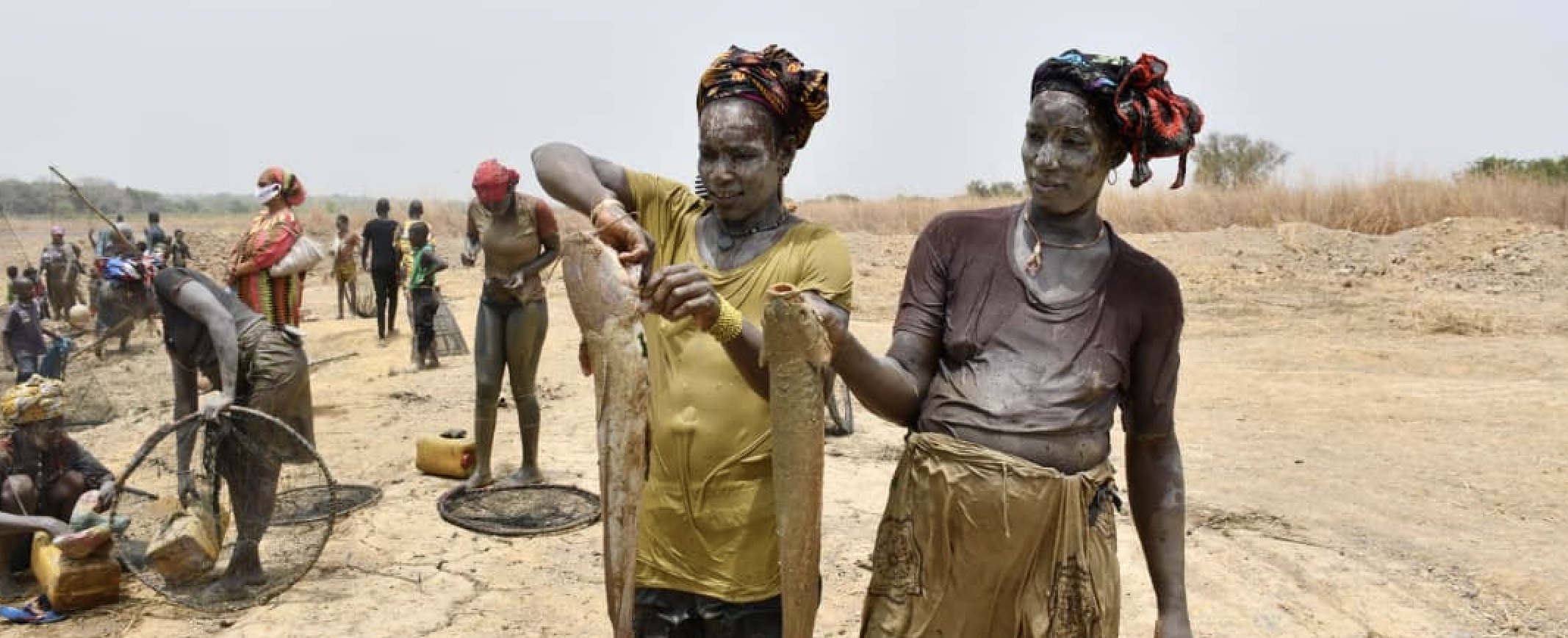
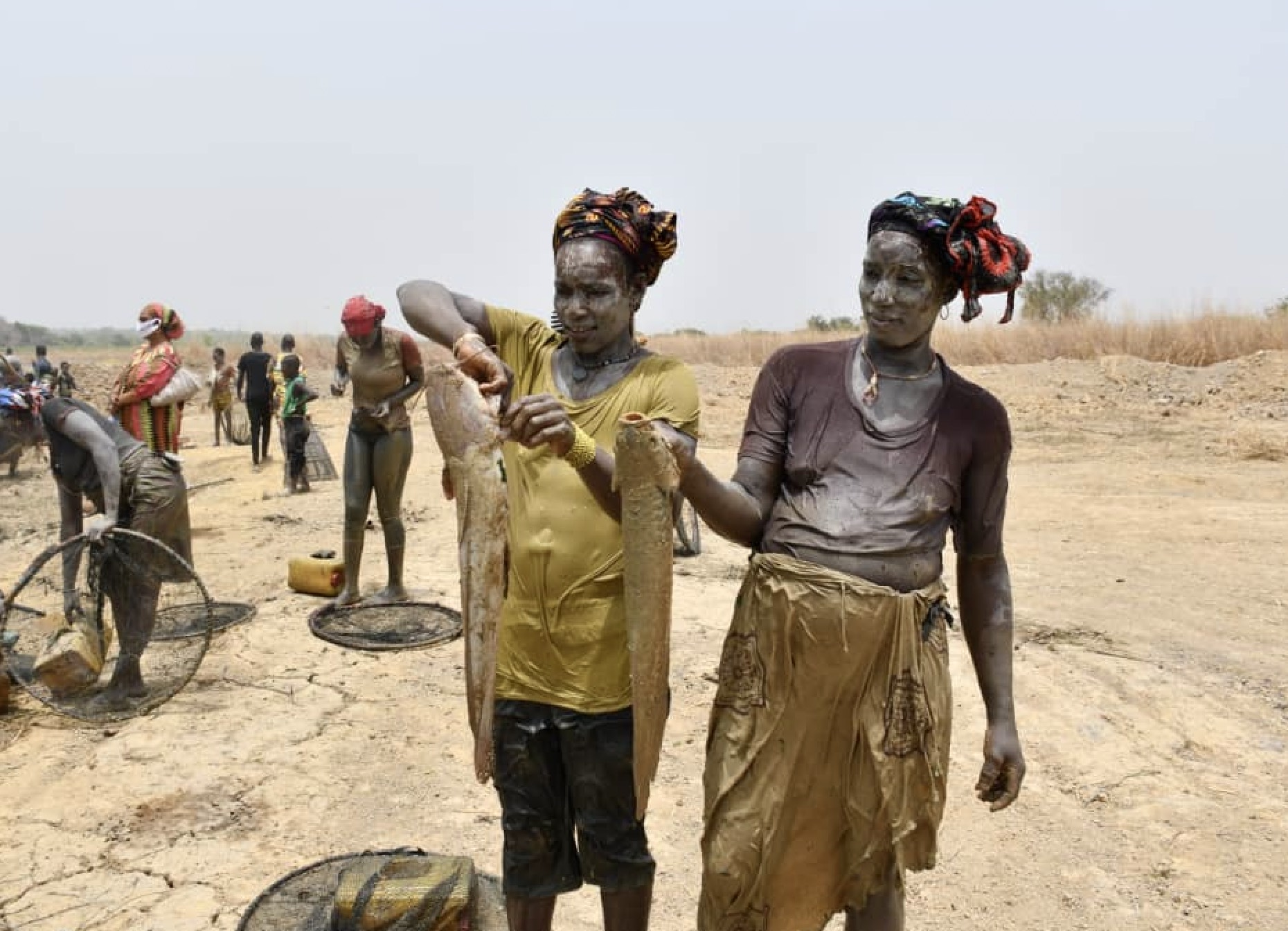
Integrating Climate Change Risks into National Development Planning Processes in Haiti
The project sought to strengthen institutional and technical capacities in Haiti to iteratively develop a National Adaptation Plan (NAP). Additionally, it aimed to integrate climate change adaptation into national and sub-national coordination, planning, and budgeting processes. This objective was achieved by advancing existing frameworks and systems, enhancing the capacities of various stakeholders to effectively contribute to the process, and establishing a mechanism to sustain the NAP process beyond this project.
Funded by the Green Climate Fund (GCF) Readiness Programme, the "Integrating climate change risks into national development planning processes in Haiti" project supported the Government of Haiti in strengthening institutional and technical capacities for iterative development of the National Adaptation Plan (NAP). This included integrating climate change adaptation into national planning and budgeting processes.
The project built on lessons from the National Adaptation Programme of Action (NAPA) implementation, as well as complementary activities currently underway in Haiti to avoid duplication of efforts. By integrating climate change adaptation into development plans, the project sought to align inclusive climate change adaptation priorities with the country’s visionary Strategic Development Plan (PSDH), National Land Use Plan (SNAT) and Disaster Risk Reduction Plan and Strategy.
As the only Least Developed Country (LDC) in the Caribbean region, Haiti’s primary economic sectors (i.e., agriculture, forestry, and fishing) are heavily affected by climatic events. As of 2023, nearly 59 percent of Haiti’s population lives below the poverty line, many of those people living in extreme poverty. According to the World Bank’s Climate Change Overview Country Summary (2022), political violence, economic imbalance, and population pressure have led to extreme environmental degradation in Haiti, with an estimated 98 percent of forests cleared for fuel. These destabilizing forces have left most Haitians extremely vulnerable to natural hazards.
Haiti has embarked on many initiatives to strengthen its resilience to climate change. However, fragmented policies and data, weak technical capacity, and inadequate climate financing, among others, have hampered the country’s efforts to plan effectively and iteratively for medium-to-long-term climate risks in its development planning and budgeting.
The project was informed by stakeholder consultations and stocktaking of existing initiatives, policies, and strategies in Haiti that were conducted by the National Adaptation Plan Global Support Programme in 2017, which resulted in an action plan to implement the NAP. The Stocktaking Report highlighted limitations and gaps, including insufficient technical and institutional capacity to effectively coordinate and implement climate change adaptation measures, scattered data and information-sharing on climate change impacts and adaptation interventions, limited capacity to monitor climate change adaptation and inform policies, and inadequate budget allocations. These served as the basis for the project activities that were later confirmed by stakeholders.
The project is expected to deliver the following results under the three key outcomes:
- Capacities of the Technical Working Group, particularly MDE (Ministry of Environment) and MCPE (Ministry of Planning), to steer the climate change coordination and integration process are developed;
- Institutional barriers to the integration of climate change into development planning and policies are reviewed and key stakeholders are sensitized to climate change adaptation and development linkages;
- Mechanisms for regularly updating and reviewing adaptation are strengthened and feed into the iterative adaptation planning process;
- Haiti's National Adaptation Plan is developed;
- A system for economic analysis and appraisal of adaptation options is established and adaptation priority interventions are integrated into the SNAT, PSDH and PNGRD;
- Universities and educational institutions are capacitated to support adaptation initiatives and the NAP process;
- Financing and Investment Strategy for the NAP is developed through a gender responsive consultative process;
- Private sector engagement in climate change adaptation is strengthened.
Project results
Despite socio-political challenges, the project advanced the NAP process in Haiti, focusing on enhancing national institutional capacities. The NAP was developed and validated by both the Ministry of Environment (MDE) and the Ministry of Planning (MCPE). The NAP document was presented at COP 27 in Egypt, the NAP Expo 2022 in Botswana, and at the launch of the National Committee on Climate Change (NCCC), providing platforms for experience-sharing and networking with potential partners. Subsequently, the NAP was published by UNFCCC in January 2023.
The project has produced strategic documents and tools, including a gender integration strategy, an exploratory report on private sector engagement in climate change adaptation, and a training mission for actors in planning and budgeting for adaptation. A NAP financing and investment strategy was developed through broad consultations with diverse stakeholders, including women’s organizations, while the communication strategy for the NAP process was validated and disseminated nationwide. An assessment of the regulatory framework and the vulnerabilities of priority sectors, such as health, agrobiodiversity, and water resources, was also conducted.
Other activities included technical working group meetings from sectorial ministries to strengthen capacity, ongoing training on climate information and adaptation integration, and stakeholder development planning and budgeting. Adaptation criteria were integrated into the Haiti Public Investment Program, while other efforts focused on incorporating SDG-aligned adaptation indicators into the national MRV system, creating new data layers with the Ministry of Environment, and organizing workshops on monitoring and evaluation, including a workshop on adaptation practices. Additionally, research programs for priority sectors with two Haitian universities were finalized.
Various initiatives aimed at revising strategic documents were supported, including the Nationally Determined Contributions (NDC), the development of an operational plan for the PNGRD and the reinforcement of the EIS-Haiti database for the monitoring of climate indicators, among others. Additional activities involved formulating addendums for the PSDH and SNAT, developing project concept notes, and promoting private sector participation in adaptation.
Several good practices and lessons learned from adaptation measures were compiled to promote successful approaches and were incorporated into the Environmental Information System platform. Moreover, collaboration with partners and stakeholders allowed the project to continue the implementation and validation of deliverables while developing synergies between climate change adaptation actions in the field.
Outcome 1: The coordination mechanism for multi-sectoral adaptation planning and implementation is strengthened at different levels
Outcome 2: The NAP is compiled with a strong evidence base for adaptation planning and priorities are integrated into the Strategic Development Plan and the Disaster Risk Reduction Plan and Strategy
Outcome 3: A financing framework for climate change adaptation action in the medium-to long-term is established.
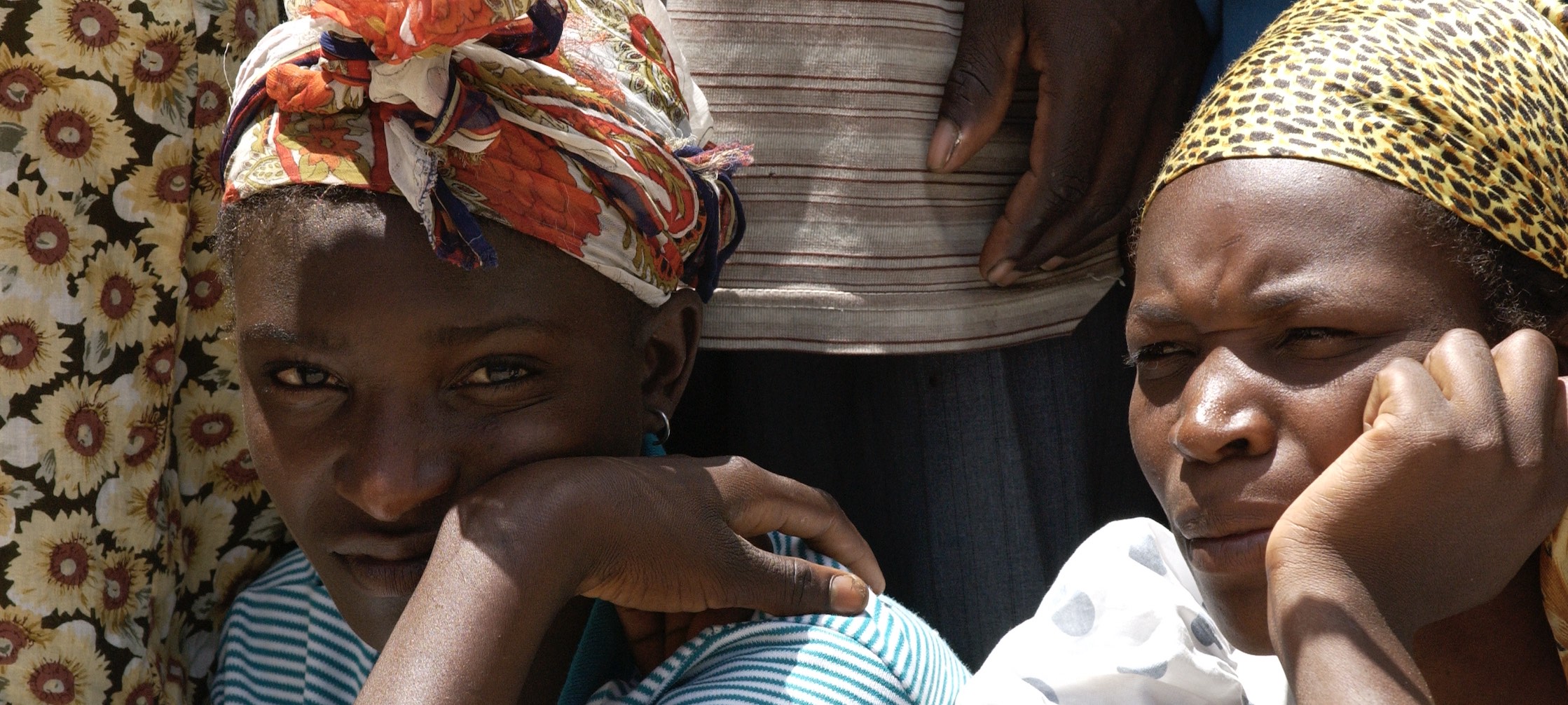
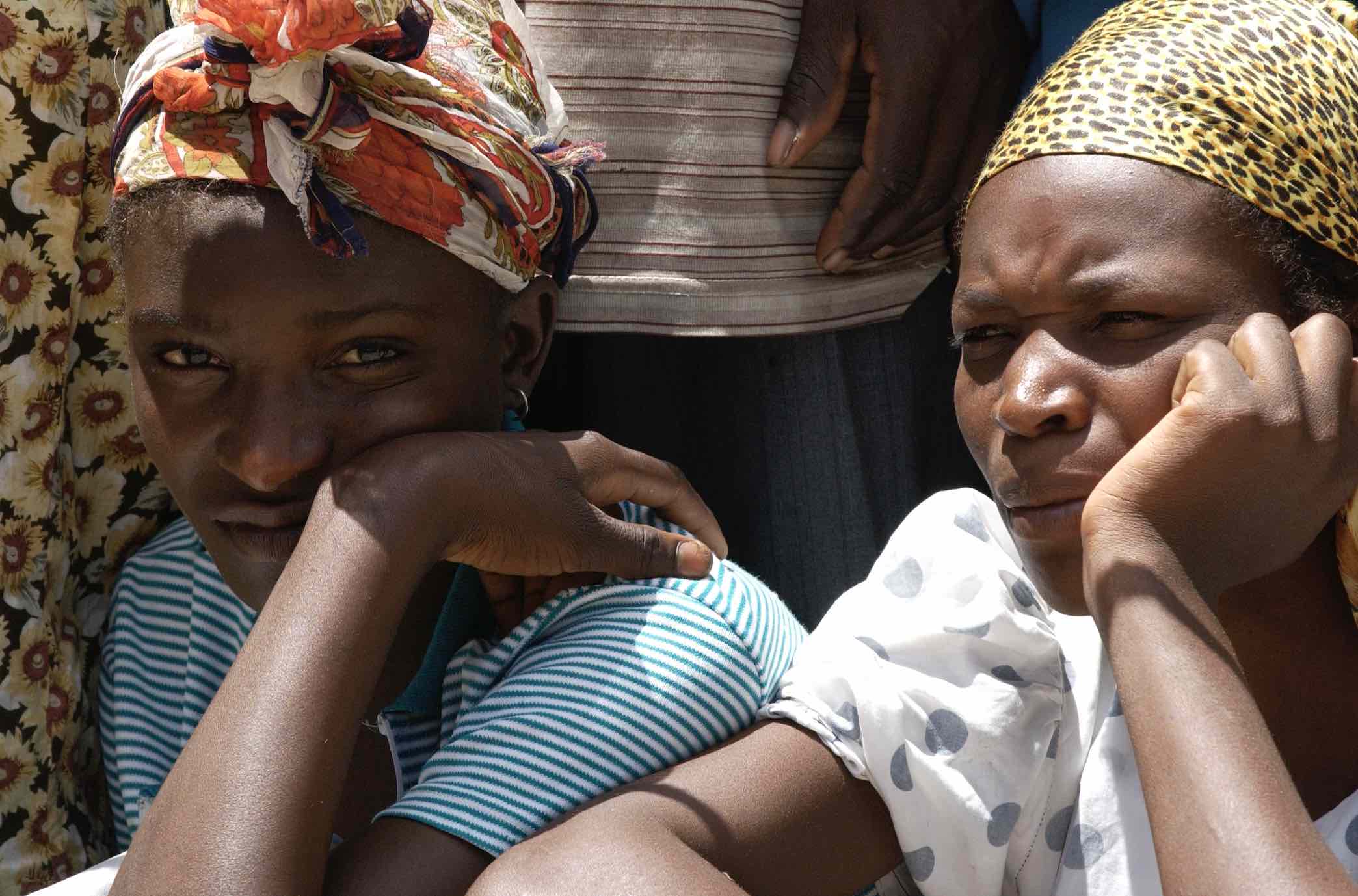
Accelerating Climate Change Adaptation Investment Planning to Enhance Resilience in Indonesia
The project supports the implementation and monitoring of the National Action Plan for Climate Change Adaptation in Indonesia (RAN-API). Operating at the national and sub-national levels, national-level activities are updating and strengthening the National Action Plan for Climate Change Adaptation (RAN-API) and enhancing the vulnerability monitoring system (SIDIK), incorporating a gender-responsive approach. Meanwhile, local activities are concentrating on risk-assessments and landscape-based adaptation for the archipelagic island site of Wakatobi. The project is focused on addressing challenges, including weak coordination and cross-sectoral information sharing, underrepresentation of vulnerable groups, and lack of adaptation criteria application in budget tagging.
The project “Accelerating Climate Change Adaptation Investment Planning to Enhance Resilience in Indonesia” addresses the barriers to adaptation planning and ensures that the National Action Plan for Climate Change Adaptation (RAN-API) is well coordinated, implemented, and monitored. The project has both a national and sub-national dimension: at the national level, it supports the next update of the RAN-API and enhances relevant assessment and budgeting systems. At the sub-national level, the project enhances landscape-based adaptation planning approaches in the archipelagic island site of Wakatobi that may be scaled up in the future. The Wakatobi District was chosen as an appropriate piloting site due to its manageable size, coastal location, and archipelagic landscape. As a marine national park, it also presents the opportunity to explore and develop ecotourism as a potential adaptation option.
Climate change impacts are already evident across various economic sectors in Indonesia. The most dominant disasters in Indonesia are floods, windstorms, landslides, and droughts, and these events are expected to be further exacerbated by climate change. The NDC (submitted in 2016 and updated in 2021, with an enhanced version released in 2022) has identified both mitigation and adaptation priorities to address these threats. Climate change adaptation has already been integrated into the country’s development planning through the National Action Plan for Climate Change Adaptation (RAN-API 2013–2025) and the fourth Medium Term Development Plan of Indonesia (RPJMN 2020-2024). While Indonesia’s adaptation planning process is considerably developed, several barriers to enhanced adaptation planning and implementation of adaptation options remain. These include a lack of effective coordination, the absence of an updated adaptation plan, inadequate focus on identifying adaptation options in vulnerable areas, unavailability of detailed information and vulnerability assessments for adaptation planning at national and sub-national levels, and challenges in tracking adaptation-related investments at national and sub-national levels. In addition, the lack of capacity for adaptation planning and budgeting is a cross-cutting issue for national ministries and sub-national governance structures.
The project aims at delivering the following results under the three main outcomes:
- RAN-API coordination and implementation strengthened;
- Legal standing for RAN-API to ensure planning and budgeting related to climate change adaptation in place;
- The RAN-API updated, including the formulation of a comprehensive financing strategy;
- Climate change budgeting system for adaptation enhanced.
- SIDIK enhanced, gender-responsive climate change risk assessment process developed;
- Existing science base for RAN-API reviewed and improved;
- Stakeholder capacity built for climate risk and impact assessment, and identifying suitable adaptation measures.
- Government staff in Wakatobi trained on gender-responsive climate risk assessments;
- Climate risk assessment for Wakatobi islands conducted using landscape-based adaptation;
- Government staff in Wakatobi trained on gender-responsive adaptation planning and budget tagging;
- A gender-responsive adaptation planning and budget tagging system developed and implemented in Wakatobi.
Outcome 1: The National Action Plan for Climate Change Adaptation (RAN-API) updated and climate change adaptation integrated in budgeting systems.
Outcome 2: Vulnerability and risk assessment process (SIDIK) enhanced at the national level for sectors identified in the adaptation component of the Nationally Determined Contributions (NDC).
Outcome 3: Integrated risk assessment and landscape-based adaptation planning and budgeting established in Wakatobi.
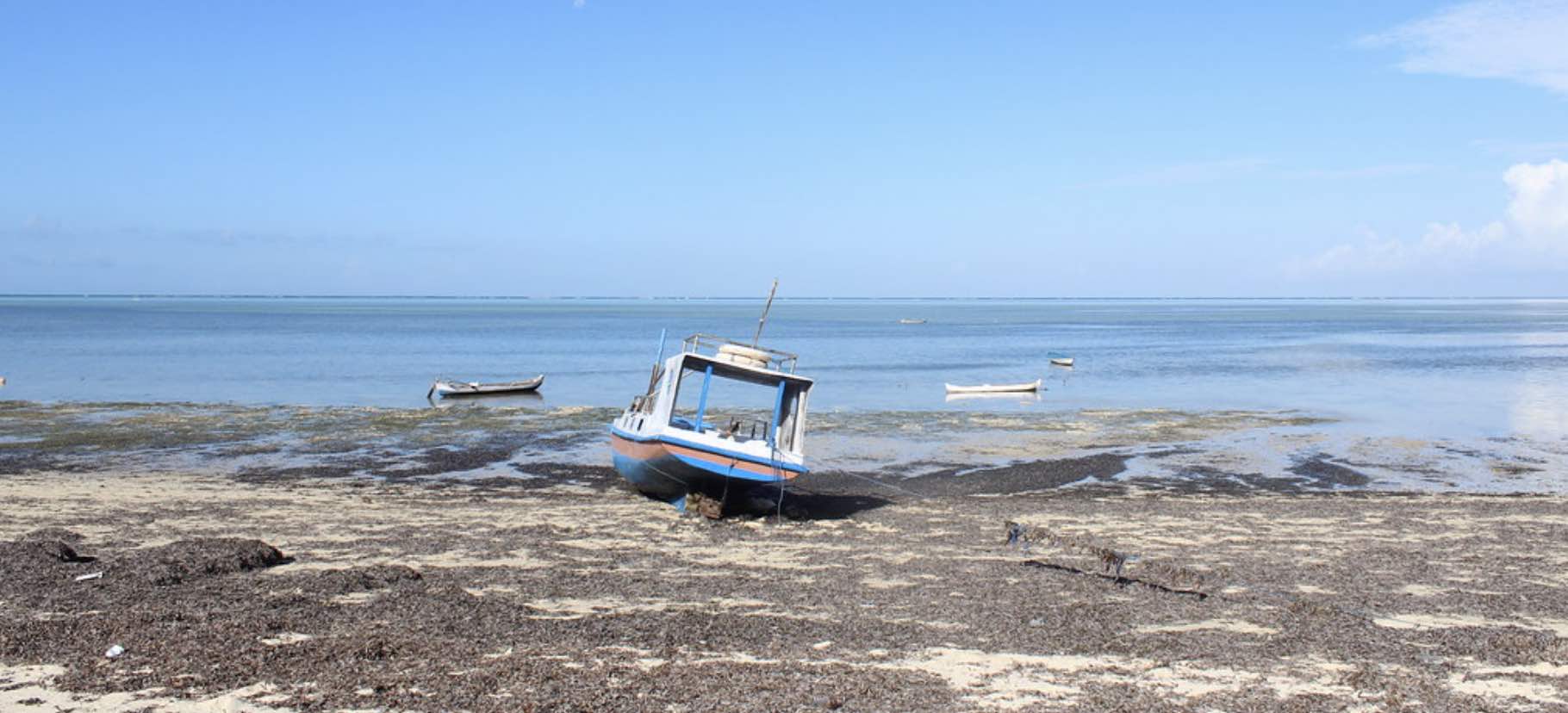

Advance the National Adaptation Plans process for medium term investment planning in climate-sensitive sectors and coastal areas in Liberia
The project’s objective was to support the Government of Liberia in advancing its National Adaptation Plan (NAP) process in climate-sensitive sectors: agriculture, energy, waste management, forestry, health, and coastal areas. The project was a first of its kind, approved by the Green Climate Fund (GCF) Board in November 2016 prior to the introduction of the GCF Readiness guidebook. The project informed the introduction and subsequent evolution of the guidelines on adaptation planning in Liberia.
Significant outcomes and outputs were achieved across four key areas. In Outcome 1, institutional frameworks were strengthened, and a climate change strategy was developed. Outcome 2 focused on expanding the knowledge base through risk assessments, economic studies, and a knowledge-sharing platform. Outcome 3 enhanced capacity for mainstreaming climate change into planning and budgeting, including technical guidelines and capacity-building programs. Lastly, Outcome 4 supported the scaling up of prioritized adaptation investments, identified policy options, and fostered public-private partnerships. These efforts contributed to Liberia's National Adaptation Plan, promoting resilience and sustainability in the face of climate change.
The GCF-funded project "Advance the NAPs process for medium-term investment planning in climate-sensitive sectors (i.e. agriculture, energy, waste management, forestry and health) and coastal areas in Liberia" aimed to strengthen institutional frameworks and coordination for the implementation of the NAP process, expand the knowledge base for scaling up adaptation, build capacity for mainstreaming climate change adaptation into planning and budgeting processes and systems, and formulate financing mechanisms for scaling-up adaptation.
In addition to the project delivery partner, the Environment Protection Agency and the National Climate Change Secretariat, other key partners included the Ministry of Finance and Development Planning, Ministry of Agriculture, National Disaster Management Agency, University of Liberia, Liberia Maritime Authority, Bureau of National Fisheries, Liberia National Department of Meteorology, Ministry of Mines & Energy, Ministry of Health, Liberia Institute of Statistics and Geo-Information Services, and the University of Liberia.
Liberia, like other developing countries, especially Least Developed Countries (LDCs), is vulnerable to the impacts of climate change. Despite having a low carbon footprint, the country anticipates severe consequences in key sectors, including agriculture, fisheries, forests, energy production related to the availability of water resources, coastal areas, and health. Approximately 70% of the population relies on agriculture for their livelihoods, with rural areas experiencing up to 80% vulnerability to food insecurity, according to the Environmental Protection Agency. Coastal regions, spanning 350 miles, face challenges from ongoing coastal erosion, sea level rise, storms, precipitation changes, and warmer ocean temperatures. Health risks include heightened vulnerability to diseases like malaria, cholera, and diarrheal diseases. Moreover, climate change may adversely affect hydroelectric generation from the Mount Coffee hydropower plant.
Liberia initiated its NAP process in 2015, establishing a roadmap in consultation with key stakeholders. This roadmap, grounded in the evaluation of existing climate initiatives and identification of gaps and capacity needs, serves as a guide for the short, medium, and long-term implementation of the NAP process in Liberia.
Key Project Results
Liberia submitted its NAP to the UNFCCC in 2021, with the project providing support in its development, including organizing a multi-sectoral working group to review and validate the final document. The project also achieved the following:
- Developed a comprehensive Climate Change Policy and Response Strategy.
- Supported the ratification of the Paris Agreement.
- Established the School of Environment and Climate Change at the University of Liberia, offering four graduate programs.
- Assessed climate change impacts on gender.
- Developed tools for mainstreaming climate change into programmatic activities.
- Conducted climate vulnerability/economic assessments and developed adaptation plans for key sectors.
- Implemented financial management and capacity support, including an enterprise resource planning system for the Environmental Protection Agency (EPA).
- Supported the national disaster risk assessment, development of the National Disaster Risk Reduction strategy, and launched the disaster database platform.
- Integrated economic assessments of adaptation studies in key sectors and developed a policy paper highlighting economic impacts of climate change in Liberia.
- Deployed 25 rainfall stations across the country to support the early warning system.
- Conducted capacity building for effective appraisal of investment priorities in sector ministries and mainstreamed climate change adaptation in sector strategies and plans.
- Established programs to inform and learn from the private sector on identifying climate variability and managing climate change (including setting up a private sector climate action alliance - Private Sector Working Group on Climate Change Adaptation Formed)
- Conducted policy analysis for future financing instruments/options for adaptation, including identifying alternative funding sources.
- Developed information products to support the private sector, particularly micro, small, and medium enterprises, in integrating adaptation into their investment planning.
Outcome 1: Strengthening of Institutional Frameworks and coordination for the NAPs process.
In the latter part of 2020, key activities under this outcome focused on enhancing the financial management and operational capacity of the Environmental Protection Agency (EPA) and the Climate Change Secretariat. This involved the implementation of an enterprise resource planning system. Additionally, a video documentary was developed to catalog essential project results, featuring feedback from key stakeholders and partners. The aim is to document lessons learned, challenges, success stories, and illustrate the meaningful impact the project has had in supporting climate change adaptation planning in Liberia.
1.1 Climate change strategy and action plan for adaptation developed as part of the NAP process.
Adaptation strategies and action plans for agriculture, forestry, fisheries, and coastal areas have been developed. Additionally, a national climate change adaptation strategy and action plan have been produced and formally launched, including the publication of Liberia’s NAP (2020-2030) document.
1.2. Coordination and monitoring enhanced for climate change adaptation program development across sectors.
The project assisted the Environmental Protection Agency (EPA)/National Climate Change Secretariat (NCCS) by conducting a capacity assessment and providing training in financial management, procurement, human resources, and other operational capacities. Subsequently, an Enterprise Resource Planning (ERP) System was established. The aim is to enhance the EPA's capacity in budgeting, accounting, governance, funds flow, financial reporting, internal control systems, and auditing for funds accessed from both the national budget and external sources.
Outcome 2: Expansion of the knowledge base for scaling up adaptation.
Liberia has faced a shortage of scientific data on climate impacts, including limited knowledge of current climate variability and risks, as well as the absence of an early warning system. The project expanded the knowledge base for scaling up adaptation interventions through various activities. This includes conducting economic assessments of adaptation strategies to inform funding proposals and national policies. Climate vulnerability and risk assessments were carried out to establish an evidence base for research, planning, and implementing adaptation action plans. Additionally, a knowledge-sharing platform was developed to facilitate information exchange and collaboration.
2.1. Risk assessments and economic impact studies in climate sensitive sectors conducted and incorporated in official data systems.
The project conducted a climate vulnerability and risk assessment for several sectors, including coastal, agriculture, forestry, fisheries, energy, and health (ongoing). Simultaneously, awareness-raising initiatives with relevant stakeholders were undertaken.
2.2. Effective knowledge sharing platform as a resource for climate relevant planning established.
The project conducted a gap analysis and collaborated with relevant IT staff and an international consulting firm to develop a climate change knowledge management platform. This platform, hosted at http://ccksp.gnf.tf, aims to expand knowledge and build capacities within the Liberian government. It serves as a repository for climate change-related data and information and offers training programs for a diverse audience, including practitioners, students, policymakers, and advocates. The project conducted at least six training sessions for staff from sectors such as waste management, forestry, energy, health, agriculture, and coastal management.
2.3. Climate Change disasters-related database developed.
The project procured and supplied meteorology equipment, including 25 rain gauges, for the Meteorology Department. These rain gauges have been strategically installed nationwide to enhance the production and distribution of weather information to various users, including farmers and fishermen. In addition, six staff members from the Meteorology Department received training on the operation of the system, ensuring effective utilization of the equipment.
Outcome 3: Strengthened capacity for mainstreaming CCA into planning, and budgeting processes and systems.
The project supported the formulation of mechanisms for scaling up adaptation investments and addressing financial gaps through various activities. This included assessing economic impacts and opportunities arising from climate change.
3.1. Technical guidelines for the personnel of the Ministry of Finance & Development Planning and other relevant Ministries, to mainstream climate change into budgeting and planning processes incorporating gender disaggregated data.
The project developed technical guidelines for personnel at the Ministry of Finance & Development Planning (MFDP) and other relevant ministries. These guidelines are designed to facilitate the mainstreaming of climate change considerations into budgeting and planning processes. Additionally, training sessions were conducted to familiarize personnel from MFDP and other sectoral entities with the use of these guidelines.
3.2. Capacity building programs on implementing adaptation investments and strategies established.
The project conducted a capacity assessment and developed a three-year climate change capacity development plan for the EPA and key sectoral agencies. The University of Liberia initiated its graduate program in 2019, the "School of Environmental Studies and Climate Change (SESCC)," in partnership with the EPA and UNDP. The project facilitated the provision of climate change adaptation textbooks to the school and fostered a partnership between the University of Liberia and the Least Developed Countries Universities Consortium for Climate Change (LUCCC), promoting research, knowledge sharing, and education in climate change. Eleven government staff members completed international training in climate change adaptation in Israel, and a south-south exchange tour for policymakers on knowledge sharing was successfully completed.
3.3. Monitoring and reporting system to track adaptation investments and implementation.
The project developed a detailed design for tracking climate finance, reviewed by stakeholders. An IT firm was hired to support the creation of a climate finance tracking system, integrated with monitoring and evaluation (M&E) indicators, and training sessions on the climate-proofing tool were conducted for the EPA team and other stakeholders. The National Monitoring System was assessed, resulting in a report with recommendations for integration into the national financial reporting systems, incorporating tracking tools and criteria to estimate adaptation financing in Liberia.
Outcome 4: Mechanisms to support scaling up of prioritized adaptation investments and addressing of financial gaps.
Outcome 4 included policy analysis for future financing instruments and options for adaptation. Alternative funding sources, such as private and local funds, were identified. The project created information products to support private sector engagement, with a focus on micro, small, and medium enterprises, helping them integrate adaptation into their investment planning. Furthermore, the project supported the development of costed investment plans for the agricultural sector and coastal areas in collaboration with partners. It successfully identified and prioritized at least two bankable projects and developed strategies to encourage private investments in new technologies and foster public-private partnerships for implementing climate change adaptation interventions.
4.1. Sector and area based costed investment plans prepared for scaling up adaptation in agriculture and coastal areas that take into account climate change risks and opportunities.
The project successfully developed and validated adaptation options for priority sectors, including agriculture, forestry, coastal areas, waste management, energy, and fisheries. This included the preparation of two bankable adaptation projects (agriculture and forestry, mangroves and ecotourism) for multi-sector implementation.
4.2. Policy options for scaling up financing for adaptation investments identified and recommended.
The project developed specific climate finance advisory products, offering detailed information on the country's climate finance landscape, criteria, funding amounts, and eligibility requirements. Stakeholders underwent climate finance training to enhance their understanding of available financing options. The project's identification of additional financing windows beyond traditional sources provides Liberia with opportunities to expand its resource mobilization for climate change action.
4.2. Foster Public Private Partnerships (PPPs) to support adaptation investments.
The project facilitated the creation of a private sector platform and developed knowledge products to support climate change adaptation planning. This included capacity-building support to encourage private sector engagement in climate action and attract private finance through partnerships and other financing options. The establishment of the Liberia Private Sector Climate Change Alliance served as a platform for collaboration between the private sector, government, and other stakeholders on climate initiatives. Great enthusiasm exists within the private sector to engage the government upon the realization that climate change represents a serious risk to private investment.
Crisis to Action: Liberia’s national adaptation plan addresses climate change (2023)
Liberia: Government Launches Country’s National Adaption Plan (2021)
Private Sector Working Group On Climate Change Adaptation Formed (2020)
National Adaptation Plans Report: Lessons from Liberia (2019)
University of Liberia launches new degree program on Environmental Studies (2019)
Building effective climate governance in Liberia (2018)
Need for Collective Partnership to Avoid Natural Hazards Stressed (2018)
Liberia Faces Natural Hazards Threat, EPA, UNDP Warn (2018)
University of Liberia to Commence Environmental Studies Soon (2018)
Liberia: 51 Vulnerable Youth and Women Trained in Production of Energy Efficient Cook Stoves (2018)
Integrating gender in the mitigation of climate change (2018)
EPA, UNDP Hold SDGs Training in Nimba (2018)
Liberia Launches National Policy and Response Strategy on Climate Change (2018)
UNDP and partners sign agreement on graduate programme for environmental studies (2018)
Liberia set to launch National Policy and Response Strategy on Climate Change (2018)
UNDP Equips EPA Monitoring System (2018)
National Disaster Management Agency, UNDP-Liberia Conduct Training on National Disaster Readiness (2018)
Government, Partners Launch National Adaptation Plan of Liberia (2018)
Environment chief: Why we’re prioritizing climate governance in Liberia (2018)
Liberia receives first instalment of US$2.2 million GCF grant for climate adaptation (2015)
GCF approves first grants for National Adaptation Planning in Liberia and Nepal (2015)
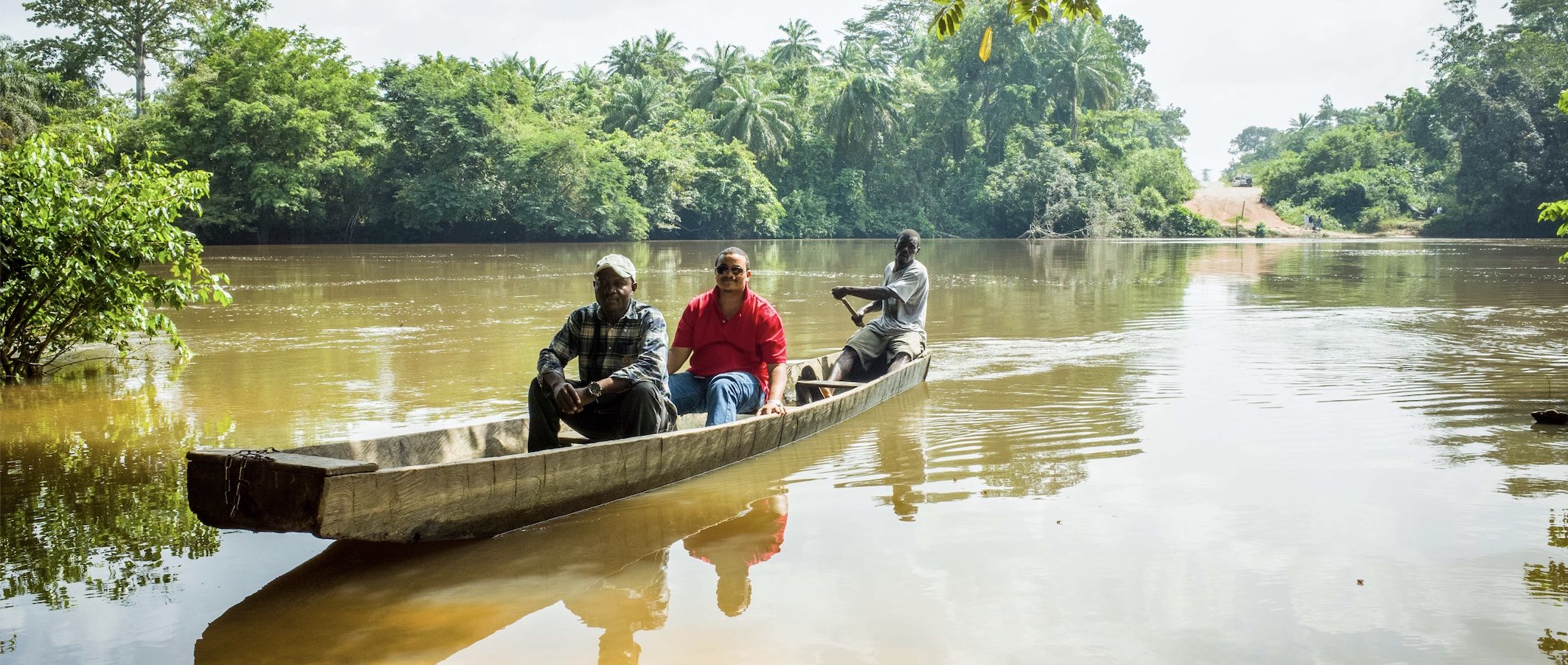
Advance the National Adaptation Plans process for medium term investment planning in climate-sensitive sectors and coastal areas in Liberia
The project’s objective was to support the Government of Liberia in advancing its National Adaptation Plan (NAP) process in climate-sensitive sectors: agriculture, energy, waste management, forestry, health, and coastal areas. The project was a first of its kind, approved by the Green Climate Fund (GCF) Board in November 2016 prior to the introduction of the GCF Readiness guidebook. The project informed the introduction and subsequent evolution of the guidelines on adaptation planning in Liberia.
Significant outcomes and outputs were achieved across four key areas. In Outcome 1, institutional frameworks were strengthened, and a climate change strategy was developed. Outcome 2 focused on expanding the knowledge base through risk assessments, economic studies, and a knowledge-sharing platform. Outcome 3 enhanced capacity for mainstreaming climate change into planning and budgeting, including technical guidelines and capacity-building programs. Lastly, Outcome 4 supported the scaling up of prioritized adaptation investments, identified policy options, and fostered public-private partnerships. These efforts contributed to Liberia's National Adaptation Plan, promoting resilience and sustainability in the face of climate change.
The GCF-funded project "Advance the NAPs process for medium-term investment planning in climate-sensitive sectors (i.e. agriculture, energy, waste management, forestry and health) and coastal areas in Liberia" aimed to strengthen institutional frameworks and coordination for the implementation of the NAP process, expand the knowledge base for scaling up adaptation, build capacity for mainstreaming climate change adaptation into planning and budgeting processes and systems, and formulate financing mechanisms for scaling-up adaptation.
In addition to the project delivery partner, the Environment Protection Agency and the National Climate Change Secretariat, other key partners included the Ministry of Finance and Development Planning, Ministry of Agriculture, National Disaster Management Agency, University of Liberia, Liberia Maritime Authority, Bureau of National Fisheries, Liberia National Department of Meteorology, Ministry of Mines & Energy, Ministry of Health, Liberia Institute of Statistics and Geo-Information Services, and the University of Liberia.
Liberia, like other developing countries, especially Least Developed Countries (LDCs), is vulnerable to the impacts of climate change. Despite having a low carbon footprint, the country anticipates severe consequences in key sectors, including agriculture, fisheries, forests, energy production related to the availability of water resources, coastal areas, and health. Approximately 70% of the population relies on agriculture for their livelihoods, with rural areas experiencing up to 80% vulnerability to food insecurity, according to the Environmental Protection Agency. Coastal regions, spanning 350 miles, face challenges from ongoing coastal erosion, sea level rise, storms, precipitation changes, and warmer ocean temperatures. Health risks include heightened vulnerability to diseases like malaria, cholera, and diarrheal diseases. Moreover, climate change may adversely affect hydroelectric generation from the Mount Coffee hydropower plant.
Liberia initiated its NAP process in 2015, establishing a roadmap in consultation with key stakeholders. This roadmap, grounded in the evaluation of existing climate initiatives and identification of gaps and capacity needs, serves as a guide for the short, medium, and long-term implementation of the NAP process in Liberia.
Key Project Results
Liberia submitted its NAP to the UNFCCC in 2021, with the project providing support in its development, including organizing a multi-sectoral working group to review and validate the final document. The project also achieved the following:
- Developed a comprehensive Climate Change Policy and Response Strategy.
- Supported the ratification of the Paris Agreement.
- Established the School of Environment and Climate Change at the University of Liberia, offering four graduate programs.
- Assessed climate change impacts on gender.
- Developed tools for mainstreaming climate change into programmatic activities.
- Conducted climate vulnerability/economic assessments and developed adaptation plans for key sectors.
- Implemented financial management and capacity support, including an enterprise resource planning system for the Environmental Protection Agency (EPA).
- Supported the national disaster risk assessment, development of the National Disaster Risk Reduction strategy, and launched the disaster database platform.
- Integrated economic assessments of adaptation studies in key sectors and developed a policy paper highlighting economic impacts of climate change in Liberia.
- Deployed 25 rainfall stations across the country to support the early warning system.
- Conducted capacity building for effective appraisal of investment priorities in sector ministries and mainstreamed climate change adaptation in sector strategies and plans.
- Established programs to inform and learn from the private sector on identifying climate variability and managing climate change (including setting up a private sector climate action alliance - Private Sector Working Group on Climate Change Adaptation Formed)
- Conducted policy analysis for future financing instruments/options for adaptation, including identifying alternative funding sources.
- Developed information products to support the private sector, particularly micro, small, and medium enterprises, in integrating adaptation into their investment planning.
Outcome 1: Strengthening of Institutional Frameworks and coordination for the NAPs process.
In the latter part of 2020, key activities under this outcome focused on enhancing the financial management and operational capacity of the Environmental Protection Agency (EPA) and the Climate Change Secretariat. This involved the implementation of an enterprise resource planning system. Additionally, a video documentary was developed to catalog essential project results, featuring feedback from key stakeholders and partners. The aim is to document lessons learned, challenges, success stories, and illustrate the meaningful impact the project has had in supporting climate change adaptation planning in Liberia.
1.1 Climate change strategy and action plan for adaptation developed as part of the NAP process.
Adaptation strategies and action plans for agriculture, forestry, fisheries, and coastal areas have been developed. Additionally, a national climate change adaptation strategy and action plan have been produced and formally launched, including the publication of Liberia’s NAP (2020-2030) document.
1.2. Coordination and monitoring enhanced for climate change adaptation program development across sectors.
The project assisted the Environmental Protection Agency (EPA)/National Climate Change Secretariat (NCCS) by conducting a capacity assessment and providing training in financial management, procurement, human resources, and other operational capacities. Subsequently, an Enterprise Resource Planning (ERP) System was established. The aim is to enhance the EPA's capacity in budgeting, accounting, governance, funds flow, financial reporting, internal control systems, and auditing for funds accessed from both the national budget and external sources.
Outcome 2: Expansion of the knowledge base for scaling up adaptation.
Liberia has faced a shortage of scientific data on climate impacts, including limited knowledge of current climate variability and risks, as well as the absence of an early warning system. The project expanded the knowledge base for scaling up adaptation interventions through various activities. This includes conducting economic assessments of adaptation strategies to inform funding proposals and national policies. Climate vulnerability and risk assessments were carried out to establish an evidence base for research, planning, and implementing adaptation action plans. Additionally, a knowledge-sharing platform was developed to facilitate information exchange and collaboration.
2.1. Risk assessments and economic impact studies in climate sensitive sectors conducted and incorporated in official data systems.
The project conducted a climate vulnerability and risk assessment for several sectors, including coastal, agriculture, forestry, fisheries, energy, and health (ongoing). Simultaneously, awareness-raising initiatives with relevant stakeholders were undertaken.
2.2. Effective knowledge sharing platform as a resource for climate relevant planning established.
The project conducted a gap analysis and collaborated with relevant IT staff and an international consulting firm to develop a climate change knowledge management platform. This platform, hosted at http://ccksp.gnf.tf, aims to expand knowledge and build capacities within the Liberian government. It serves as a repository for climate change-related data and information and offers training programs for a diverse audience, including practitioners, students, policymakers, and advocates. The project conducted at least six training sessions for staff from sectors such as waste management, forestry, energy, health, agriculture, and coastal management.
2.3. Climate Change disasters-related database developed.
The project procured and supplied meteorology equipment, including 25 rain gauges, for the Meteorology Department. These rain gauges have been strategically installed nationwide to enhance the production and distribution of weather information to various users, including farmers and fishermen. In addition, six staff members from the Meteorology Department received training on the operation of the system, ensuring effective utilization of the equipment.
Outcome 3: Strengthened capacity for mainstreaming CCA into planning, and budgeting processes and systems.
The project supported the formulation of mechanisms for scaling up adaptation investments and addressing financial gaps through various activities. This included assessing economic impacts and opportunities arising from climate change.
3.1. Technical guidelines for the personnel of the Ministry of Finance & Development Planning and other relevant Ministries, to mainstream climate change into budgeting and planning processes incorporating gender disaggregated data.
The project developed technical guidelines for personnel at the Ministry of Finance & Development Planning (MFDP) and other relevant ministries. These guidelines are designed to facilitate the mainstreaming of climate change considerations into budgeting and planning processes. Additionally, training sessions were conducted to familiarize personnel from MFDP and other sectoral entities with the use of these guidelines.
3.2. Capacity building programs on implementing adaptation investments and strategies established.
The project conducted a capacity assessment and developed a three-year climate change capacity development plan for the EPA and key sectoral agencies. The University of Liberia initiated its graduate program in 2019, the "School of Environmental Studies and Climate Change (SESCC)," in partnership with the EPA and UNDP. The project facilitated the provision of climate change adaptation textbooks to the school and fostered a partnership between the University of Liberia and the Least Developed Countries Universities Consortium for Climate Change (LUCCC), promoting research, knowledge sharing, and education in climate change. Eleven government staff members completed international training in climate change adaptation in Israel, and a south-south exchange tour for policymakers on knowledge sharing was successfully completed.
3.3. Monitoring and reporting system to track adaptation investments and implementation.
The project developed a detailed design for tracking climate finance, reviewed by stakeholders. An IT firm was hired to support the creation of a climate finance tracking system, integrated with monitoring and evaluation (M&E) indicators, and training sessions on the climate-proofing tool were conducted for the EPA team and other stakeholders. The National Monitoring System was assessed, resulting in a report with recommendations for integration into the national financial reporting systems, incorporating tracking tools and criteria to estimate adaptation financing in Liberia.
Outcome 4: Mechanisms to support scaling up of prioritized adaptation investments and addressing of financial gaps.
Outcome 4 included policy analysis for future financing instruments and options for adaptation. Alternative funding sources, such as private and local funds, were identified. The project created information products to support private sector engagement, with a focus on micro, small, and medium enterprises, helping them integrate adaptation into their investment planning. Furthermore, the project supported the development of costed investment plans for the agricultural sector and coastal areas in collaboration with partners. It successfully identified and prioritized at least two bankable projects and developed strategies to encourage private investments in new technologies and foster public-private partnerships for implementing climate change adaptation interventions.
4.1. Sector and area based costed investment plans prepared for scaling up adaptation in agriculture and coastal areas that take into account climate change risks and opportunities.
The project successfully developed and validated adaptation options for priority sectors, including agriculture, forestry, coastal areas, waste management, energy, and fisheries. This included the preparation of two bankable adaptation projects (agriculture and forestry, mangroves and ecotourism) for multi-sector implementation.
4.2. Policy options for scaling up financing for adaptation investments identified and recommended.
The project developed specific climate finance advisory products, offering detailed information on the country's climate finance landscape, criteria, funding amounts, and eligibility requirements. Stakeholders underwent climate finance training to enhance their understanding of available financing options. The project's identification of additional financing windows beyond traditional sources provides Liberia with opportunities to expand its resource mobilization for climate change action.
4.2. Foster Public Private Partnerships (PPPs) to support adaptation investments.
The project facilitated the creation of a private sector platform and developed knowledge products to support climate change adaptation planning. This included capacity-building support to encourage private sector engagement in climate action and attract private finance through partnerships and other financing options. The establishment of the Liberia Private Sector Climate Change Alliance served as a platform for collaboration between the private sector, government, and other stakeholders on climate initiatives. Great enthusiasm exists within the private sector to engage the government upon the realization that climate change represents a serious risk to private investment.
Crisis to Action: Liberia’s national adaptation plan addresses climate change (2023)
Liberia: Government Launches Country’s National Adaption Plan (2021)
Private Sector Working Group On Climate Change Adaptation Formed (2020)
National Adaptation Plans Report: Lessons from Liberia (2019)
University of Liberia launches new degree program on Environmental Studies (2019)
Building effective climate governance in Liberia (2018)
Need for Collective Partnership to Avoid Natural Hazards Stressed (2018)
Liberia Faces Natural Hazards Threat, EPA, UNDP Warn (2018)
University of Liberia to Commence Environmental Studies Soon (2018)
Liberia: 51 Vulnerable Youth and Women Trained in Production of Energy Efficient Cook Stoves (2018)
Integrating gender in the mitigation of climate change (2018)
EPA, UNDP Hold SDGs Training in Nimba (2018)
Liberia Launches National Policy and Response Strategy on Climate Change (2018)
UNDP and partners sign agreement on graduate programme for environmental studies (2018)
Liberia set to launch National Policy and Response Strategy on Climate Change (2018)
UNDP Equips EPA Monitoring System (2018)
National Disaster Management Agency, UNDP-Liberia Conduct Training on National Disaster Readiness (2018)
Government, Partners Launch National Adaptation Plan of Liberia (2018)
Environment chief: Why we’re prioritizing climate governance in Liberia (2018)
Liberia receives first instalment of US$2.2 million GCF grant for climate adaptation (2015)
GCF approves first grants for National Adaptation Planning in Liberia and Nepal (2015)

Support for strengthening climate change adaptation planning for the Federal Republic of Somalia
The project aims to strengthen the national and state level capacity and coordination for climate change adaptation planning and implementation in Somalia. Barriers in effective adaptation include weak institutional coordination and capacity for adaptation planning and implementation at the federal level, a lack of technical, institutional, and managerial capacity for climate change adaptation planning at the state level, and a lack of investment planning and enabling conditions for financing climate change adaptation interventions. The project aims to support the government in overcoming these barriers considering the double challenge Somalia faces - the threats of internal conflict within the region and effects of climate change simultaneously. These unique circumstances require a different approach to addressing climate adaptation priorities, and Somalia’s National Adaptation Plan (NAP) process must be consistent with these governance challenges with specific attention paid towards the fragility of the country.
The project "Support for Strengthening Climate Change Adaptation Planning for the Federal Republic of Somalia" project is supporting the Government of Somalia to strengthen the national and state level capacity and coordination for climate change adaptation planning and implementation. The project builds on the foundation that was created when the country formulated its National Adaptation Programme of Action (NAPA) in 2013. The project addresses the priorities that were elucidated in the country’s Nationally Determined Contribution (NDC) and is consistent with the ratified National Development Plan.
Somalia is among the most vulnerable countries to climate change in the world. Somalia’s arid and semi-arid lands make up more than 80% of the country’s landmass and are prone to extreme weather conditions including periods of extended drought, highly erratic rainfall, and strong winds. Droughts occur frequently and are often followed by devastating floods. Recent studies indicate that droughts have intensified in terms of their frequency, severity and geospatial coverage over the last 50 years. Flooding and droughts have been identified as the primary climate threats in Somalia’s Nationally Determined Contributions. Climate impacts multiply existing threats to the attainment of food and water security, productive livelihoods, health and human development capabilities of the people of Somalia. Climate impacts also exacerbate conflicts over natural resources and contribute to the challenges posed by large numbers of internally displaced persons. A major factor contributing to vulnerability is the political instability and internecine conflict that has vexed Somalia since 1991. Somalia’s context of fragility requires that climate adaptation is integrated within the process of dealing with crises and addressing governance challenges to contribute to a greater stability.
The project has three primary outcomes focusing on enhancing the national institutional coordination, strengthening capacity for climate change adaptation planning at the national and state level, and strengthening financial planning for climate change adaptation. Expected results include:
- Climate change adaptation capacities and interagency coordination at key agencies strengthened;
- Tools, methodologies, and information platform to support the NAP process developed;
- State climate change adaptation frameworks developed and harmonized with the national framework;
- Preliminary climate change adaptation plans formulated at the state level;
- Climate change adaptation mainstreamed into institutional and governance support at the state level;
- NAP implementation financing plan formulated.
The project has been designed to integrate with the ongoing nation building and associated initiatives that aim to strengthen governance and institutions. The project activities are planned in states where UNDP already has ongoing operations in order to avoid potential security related risks.
Project updates
- The project supported the establishment of the National Climate Change Coordination Committee (NCCCC) in collaboration with the Directorate of Environment and Climate Change (DOECC) as per the Climate change policy of Somalia.
- An institutional review of roles and responsibilities of national institutions has been conducted identifying capacity gaps to effectively adapt to climate change within priority sectors and key ministries. The results inform further project activities such as the capacity development at the Directorate of Environment and Climate Change. Currently, a study is being conducted to clarify and formalize the roles of federal, state, and district governments to improve federal-state coordination on the formulation and implementation of policies, strategies, plans, and programs related to climate change adaptation.
- A steering committee was established that will ensure coordination with the 9th National Development Plan (NDP9) Pillar groups and ensure alignment with the national DRR strategy and the Sendai Framework and other relevant programs and initiatives to support the climate change adaptation planning. The Steering Committee consists of government agencies, civil society organizations, state governments, development partners, private sector and others.
Outcome 1: National institutional coordination and capacity for adaptation planning enhanced.
Outcome 2: Strengthened capacity for climate change adaptation planning at the state level.
Outcome 3: Strengthened financial planning for climate change adaptation.


Increasing resilience to climate change impacts in marine and coastal areas along the Gulf of Thailand
The project aims to integrate climate change adaptation into marine and coastal area related planning and budgeting in the Gulf of Thailand with a focus on agriculture, fisheries, and tourism. The project builds on Thailand’s National Adaptation Plan (NAP) process and focuses thematically on marine and coastal areas and sub-national level adaptation planning. The project’s objectives are to be achieved through three key outcomes: enhancing capacities for climate risk-informed marine and coastal area development planning; strengthening NAP implementation and mainstreaming adaptation in planning and budgeting in marine and coastal areas; and developing financing strategies for climate adaptation. This GCF NAP Readiness project is expected to provide an important contribution to the implementation of Thailand’s National Adaptation Plan (NAP), prepared by the Office of Natural Resources and Environmental Policy and Planning (ONEP), which provides an overarching planning framework for addressing climate change adaptation.
The project “Increasing resilience to climate change impacts in marine and coastal areas along the Gulf of Thailand” is designed to contribute to the implementation of Thailand’s National Adaptation Plan (NAP). The main objective of the project is to integrate climate change adaptation into planning and budgeting for marine and coastal areas. The project aims to address barriers that hinder information, knowledge, and coordination for adaptation planning; technical capacities for integration of risk informed approaches in planning and budgeting; and lack of options to attract financing for climate change adaptation, particularly from the private sector.
Marine and coastal areas of the Gulf of Thailand are expected to experience significant impacts of climate change, with increase in extreme events, sea-level rise, climate induced erosion, drought, and flooding that affect local tourism, agriculture, fisheries, natural resources and create additional stress on land and water resource management. Vulnerability is heightened due to the dependence on a limited number of economic sectors, namely agriculture and tourism. Due to their low coping capacity, limited awareness of and high exposure to climate change risks and impacts, women, young children, the elderly, the disabled, and economically marginalized social groups are the most affected by unmitigated climate change impacts and fewer income and employment generation opportunities. Therefore, there is a clear need for capacity building in communities, decision-makers, and the private sector to raise awareness about climate change risks and facilitate adaptive development planning.
The project complements other initiatives supporting the NAP implementation in Thailand. Thailand’s NAP (draft prepared in 2018) identified six key sectors: (1) water management; (2) agriculture and food security; (3) tourism; (4) public health; (5) natural resource management; and (6) human settlement and security. This project will focus on addressing gaps of current support programmes. The project will work towards improving climate-responsive natural resource management through the integrative approach of enhancing adaptation planning and budgeting in key marine and coastal economic sectors, targeting agriculture, fisheries, and tourism. The project will focus on 18 coastal provinces along the Gulf of Thailand. The overall timeline of Thailand’s NAP implementation allows this project to utilize best-practices and information from other interventions, to expand the knowledge-base and regulatory framework, particularly for the sub-national level, and to revise and update Thailand’s NAP. The following sub-outcomes (outputs) are expected to be delivered by the project:
- developed knowledge base on climate change impacts, risk, vulnerabilities, and adaptation options in marine and coastal areas, and disseminated information;
- enhanced technical capacity for planning, budgeting, and implementation of adaptation;
- updated and developed NAP monitoring modalities;
- participatory review, prioritization, and appraisal of adaptation options for climate-induced hazards affecting marine and coastal areas undertaken;
- strengthened institutional coordination for the NAP process;
- improved climate-risk informed business development and planning at the provincial, sub-district, and local levels;
- identified viable options and mechanisms for scaling up adaptation finance, including through public-private partnerships, and drafted financing strategies and concept notes;
- facilitated integration of best practices into the NAP process.
Project updates
In addition to the organization of in-person and online inception workshops, the project has conducted climate change impact projections, risk, and vulnerability assessment in 4 selected provinces of 18 coastal provinces namely Rayong, Petchaburi, Surattani and Songkhla. Select criteria of each province have been considered including existing climate risk map assessment results and gross provincial product (GPP). The climate change impact projections focused on key climate threats such as flood, drought, sea level rise, and sea surface temperature. Climate risk and vulnerability assessments have been conducted on coastal and marine resources including three key economic sectors - agriculture, fisheries, and tourism. The results of the climate change impact projections, risk and vulnerability assessments are key information to disseminate to public through a climate adaptation platform and geographical information system (GIS) and provides the basis for capacity building and consultations with sub-national government officers and local and other stakeholders. Currently, the platform has been developed and integrating the results of the studies.
Outcome 1: Enhanced capacity and knowledge to enable climate risk-informed marine and coastal area development planning at the sub-national level;
Outcome 2: Strengthened existing NAP implementation and mainstreamed adaptation in planning and budgeting in marine and coastal areas;
Outcome 3: Financing strategies for climate change adaptation in marine and coastal areas identified and developed.
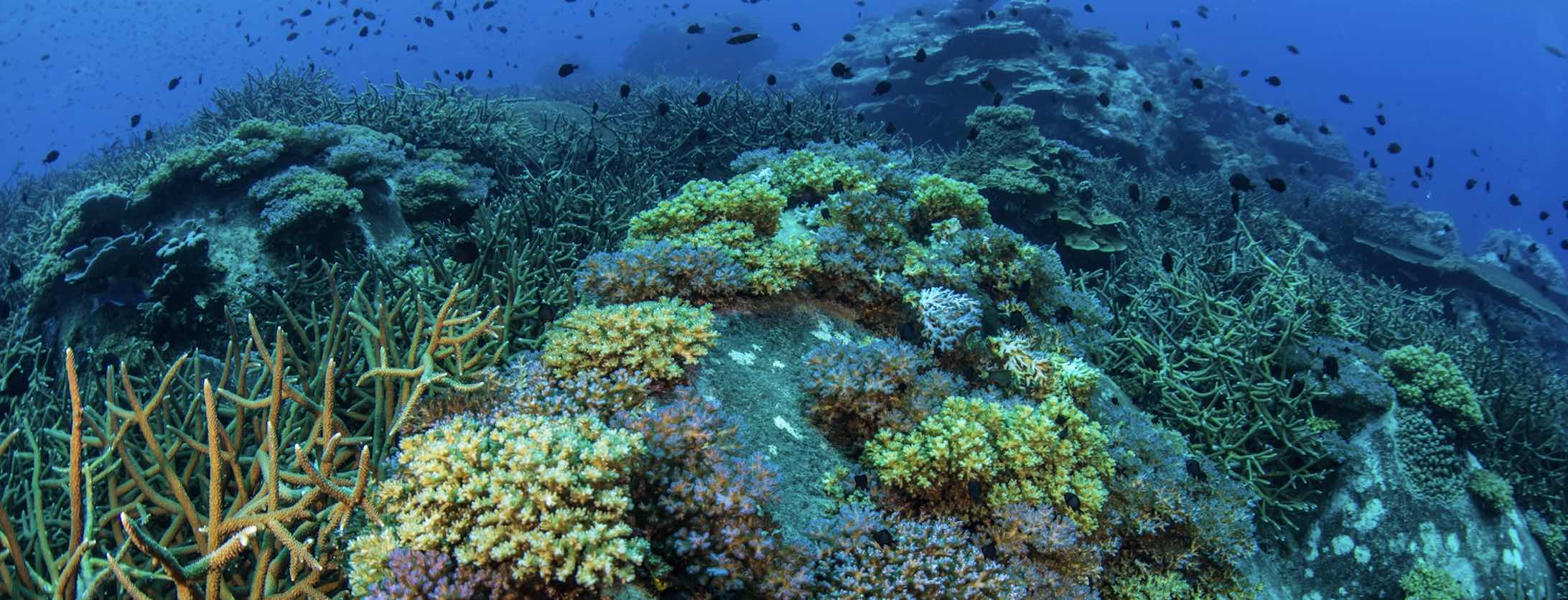

CBA Viet Nam: Minimizing Climate Change Impacts for Sustainable Aquaculture in Con Truong, Hoang Chau Commune
Aquaculture is the main activity and source of income for the 8,264 residents of Viet Nam’s Hoang Chau community. The nearby Truong Islet plays a key role in the aquaculture development of the region, as it prevents ocean waves and winds from reaching Hoang Chau Commune and its small mangrove forest area, which helps to preserve local biodiversity. Due to climate change impacts, including saltwater intrusion from strong winds and high waves brought upon by global warming, the region’s ecosystem is very fragile. Local shrimp banks are constantly affected by the sea (winds, waves and salt contamination) and inland factors (water pollution from Ma River headwater and human activities). All these factors are destroying sea dykes, and the cost of reinforcing the degraded dyke is high. Since the 1970s, limited financial capacities have prevented shrimp farming methods from evolving, and they remain highly dependent on climate conditions. Climatic impacts have led to a reliance on natural resources, resulting in their overexploitation. To face these challenges, the local community is looking for appropriate production models that can adapt to extreme climate change.
This Community-Based Adaptation project aimed to promote sustainable fisheries development by testing climate change adaptation models in aquaculture and fishing. Thanh Hoa Fisheries Association initiated the project after extensive discussions with local residents through a participatory process actively involving the Hoang Chau community. The project aimed at testing climate change adaptation models in aquaculture and fishing for sustainable fisheries development in Truong Islet, a brackish water region in Thanh Hoa Province and Hoang Chau Commune.
* This project was part of Viet Nam's Community-Based Adaptation portfolio. *

PIFs
Thanh Hoa is a province in the north of Central Vietnam, with 102 kilometers of coastline, 17,000,000 square kilometers of ocean surface and a population of over 3.6 million. The coastal and gulf area is favourable for aquaculture development. Ponds, lakes and shallow areas for aquaculture and riziculture make up 7,500 hectares. About 480,000 people rely on aquaculture for their primary income. The annual gross of fisheries products is 75,000 tons, 45,000 tons of which come from ocean exploitation and 30,000 tons from aquaculture. The potential to develop aquaculture is great, yet crop failures are common due to frequent natural disasters, exhausted coastal resources, polluted water and diseases.
Located in the southeast of Hoang Chau Commune, Hoang Hoa District, Truong Islet has a crucial role to play in aquaculture development in both Hoang Chau and Thanh Hoa Province as a whole. The Islet has a brackish water aquaculture area of 300 hectares, accounting for 1/10 of the total brackish water aquaculture area in the Province. From an economic and social perspective, the Islet has a crucial role in preventing wave and wind impact on inner regions, including Hoang Chau Commune. From a biological perspective, Truong Islet has significant biodiversity on land and in the water.
In the 1970s and 1980s, the mangrove forest area in Truong Islet was relatively large (about 200 hectares), with many kinds of fisheries species like shrimps, crabs, oysters, and lots of fishes.
Shrimp farming first appeared in Truong Islet in the 1970s. At present, there are 5 divisions with 137 households doing aquaculture in Truong Islet, both natural resource exploitation and farming fisheries products. Hoang Chau fishermen are facing several challenges, including the impact of climate change. The change in salinity due to saltwater intrusion results in slow development or massive death of fisheries species. The residents have to make higher dykes to cope with higher sea levels. The temperature fluctuations weaken fisheries species and make them susceptible to disease and death. Small floods, which now come earlier in the year, make the residents harvest shrimp prematurely, affecting their economic value.
Fisheries resources in the region are seriously degrading. In recent years, Ma River has been polluted due to human activities, affecting the aquaculture in Truong Islet. Aquaculture in Truong islet is at high risk because of environmental pollution and unpredictable weather. Aquaculture techniques have not changed ever since they started this trade: they still use the conventional methods although breeds, climate and natural resources conditions have changed considerably as a result of environmental degradation and the negative impacts of climate change.
To address these challenges, this Community-Based Adaptation project implements the following key activities:
- Improve farming techniques in aquaculture and fishing to adapt to climate change
- Plant mangrove forests to reduce impact of natural disasters, to protect the surrounding banks and prevent erosion caused by sea level rise
- Protect and regenerate natural fisheries resources for sustainable exploitation of natural fisheries resources in the project area
- Experiment with a community revolving loan programme to assist affected fishermen in aquaculture development and disaster emergency
- Enhance community capacity and awareness on climate change and sustainable aquaculture issues
Outcome 1: Building and testing models to adapt to climate change in brackish water aquaculture and fishing
Design and test 3 Models with suitable species and crops (Output 1.1) and include 20 households that will benefit from these models (Output 1.2).
Outcome 2: Mangrove forests and resources are managed and used in a sustainable manner
Design a commune plan (Output 2.1) that plants at least 20 hectares of mangrove forests (Output 2.2), including beekeeping models that directly benefit at least 20 households (Output 2.3).
Outcome 3.0: A revolving loan programme is developed and managed by the community
Enroll at least 20 households in the loan programme in the first year (Output 3.1), and at least 30 more households by the end of the project (Output 3.2). Repay the investment for experimental models, to be put in the loan programme for revolving (Output 3.3).
Outcome 4.0: Training and awareness raising activities on CC issues and sustainable fisheries are conducted
Hold at least 4 awareness raising workshops for at least 300 participants (Output 4.1), at least 12 training sessions and 10 community workshops for at least 500 participants (Output 4.2), and about 50 community meetings to discuss project issues and activities (Output 4.3). Form and operate groups of key fishermen for monitoring environment protection, mangrove forest protection, exploitation of fisheries resources protection (Output 4.4) Develop and apply community regulation procedures (Output 4.5) while strengthening working relationships with related water management agencies to manage the water source and protect community’s rights (Output 4.6)
Outcome 5.0: Fisheries resources are regenerated.
Build a crab bank model at 3 different locations around Truong islet (Output 5.1) and organize 3 fish and shrimp releases in the project area (Output 5.2).
The Vulnerability Reduction Assessment (VRA) will be measured at the planning stage of the project, at the mid-point, and at the end of project. Given that the VRA is qualitative and is based on the community perceptions, the first VRA was conducted to establish a baseline during the Project planning phase as described above. A second VRA will be done at mid project after all the project model building activities have been completed. A final VRA will be done at the end of the project to assess the overall impact of the project on the community adaptive capacity.
The VRA questions that will be used are as follows:
- Rate the impact of climate change (extreme weather and early small flooding, temperature rise, sea level rise and salinity) on your income from aquaculture and fishing
- Rate your ability to cope with the negative impacts of climate change 3. Rate the impact on your livelihood if climate change impact doubles
- Rate how effective you think this project will be in reducing your risks from increasing natural disasters and temperature rise, sea level rise and salinisation.
- Rate your confidence that the project will continue to reduce climate change risks after the project ends.
The Impact Assessment System (IAS) indicator will be measured at the end of the project using the following components:
- The number of hectares/models of aquaculture development applying the project techniques in sustainable aquaculture and fishing to adapt to CC impact
- The number of hectares of mangroves protected and planted
- The number of innovations developed/applied under the project (4) The number of policy recommendations proposed in environmental protection and sustainable use of natural resources (fisheries and mangroves) for sustainable aquaculture and fishing in the climate change context
The targets for the above are as follows:
- Three (3) models will be tested by the project.
- 15-20 ha of mangroves will be protected and planted.
- 2-3 innovations developed/applied under the project
- Three to four recommendations on policies in sustainable aquaculture and fishing in the climate change context will be proposed to local authorities.
CBA Jamaica: Increasing Community Adaptation and Ecosystem Resilience to Climate Change in Portland Bight (CCAM)
Jamaica’s Portland Bight Protected Area includes some of the best remaining examples of coastal dry forest, the longest contiguous mangrove coastline in Jamaica, and some of the most important fish nurseries in the country. The project site has outstanding national and global importance because of its highly threatened biodiversity and ecological services. Due to climate variability, however, the Portland Bight communities of Old Harbour Bay, Hellshire, and Salt River are high risk areas for hurricanes, floods, fire and tsunamis, with more than 20,000 people living in the danger zones. Climate change also causes the loss and degradation of ecosystems, the loss of habitat for biodiversity, and the loss of ecosystem services such as coastal protection, fish nurseries, recharging of aquifers, control of soil erosion, and natural regeneration of forests. These factors threaten the lives and livelihoods of the local communities, who are very dependent on the surrounding environment.
This Community-Based Adaptation project reduces the threats to globally endangered biodiversity, ecosystems, and ecosystem services by empowering communities to manage ecosystems more sustainably in the face of climate change. Through workshops, communities' awareness of their importance and contribution to the economy will be increased, and the implementation of sustainable ecosystem use and adaptive alternatives will be taught.
* This project is part of Jamaica's Community-Based Adaptation portfolio. *
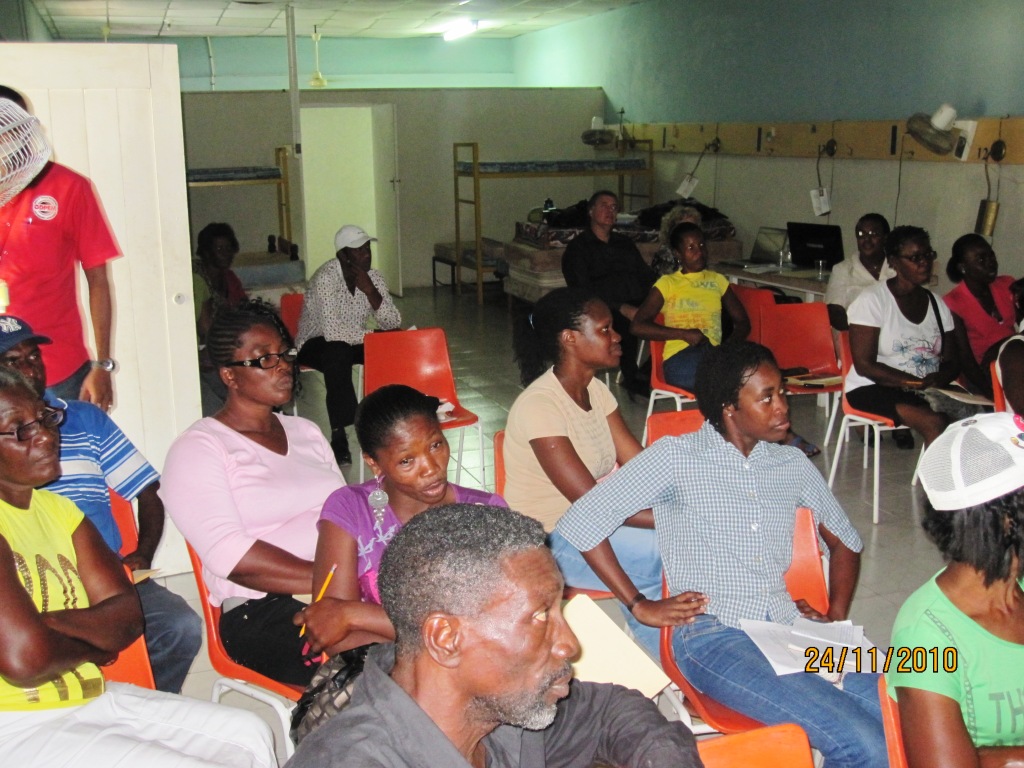
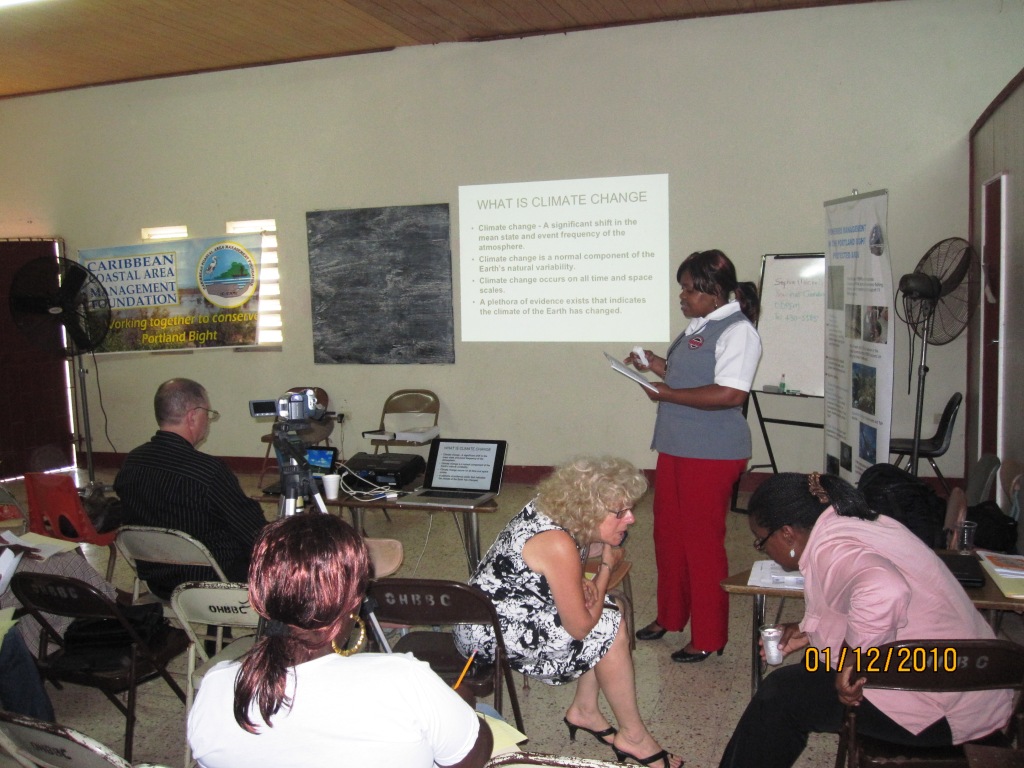
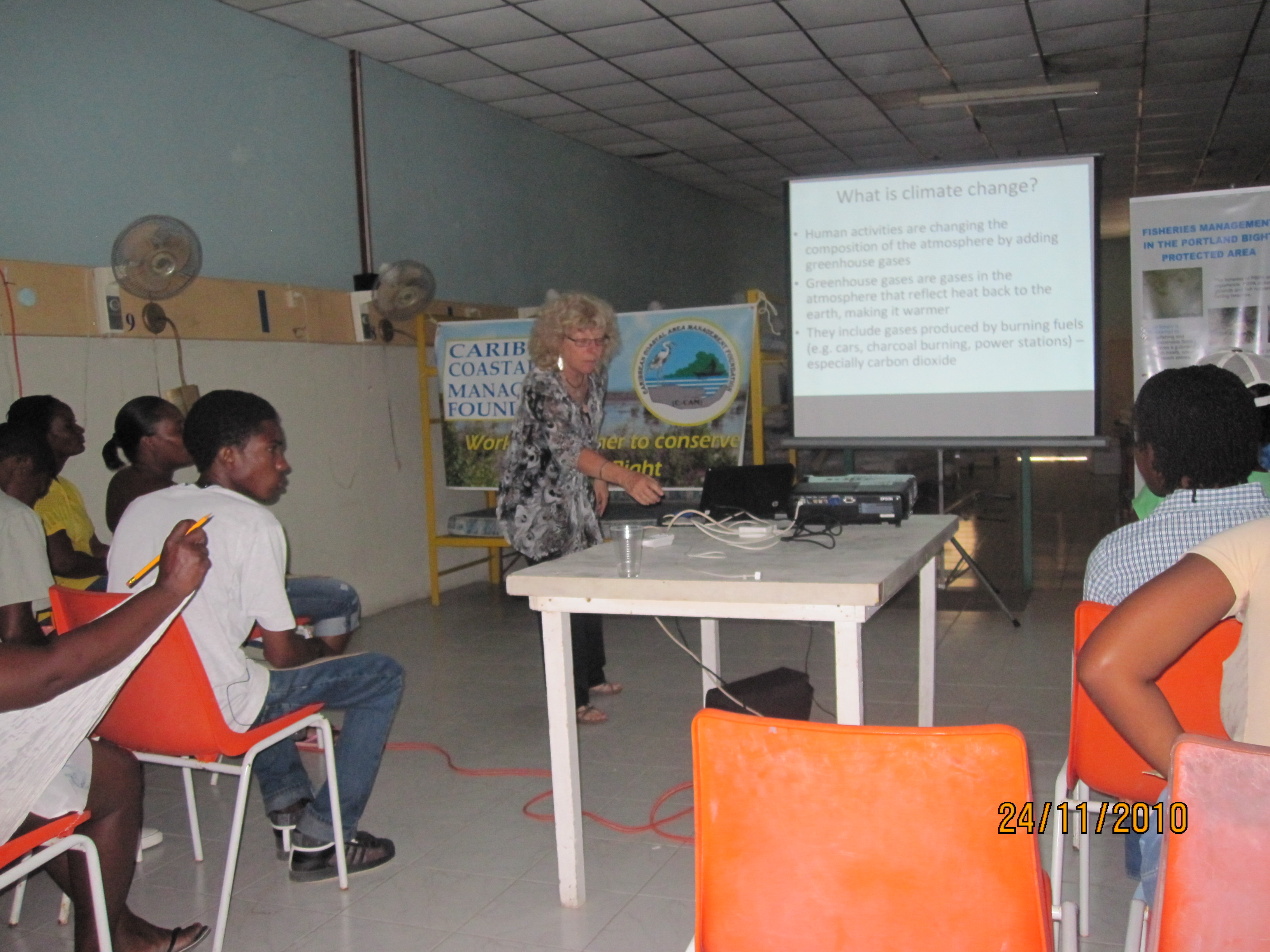
News article
CBA Jamaica - Poster Competition - Press Release (Feb. 2012)
PIFs
Project Brief / Fact Sheet
Portland Bight Protected Area (PBPA) includes coastline from Hellshire to Milk River on the South Coast of Jamaica. The coast is fringed with the longest contiguous stretch of mangroves in the country, seagrass beds, coral reefs and cays. These form the country’s largest nursery for fish, crustaceans and mollusks (including conch, Strombus gigas). The beaches provide nationally significant nesting habitat for globally threatened sea turtles (principally Hawksbill Eretmochelys imbricata) while the many rivers that drain the hinterland provide habitat for the globally threatened American Crocodile (Crocodylus acutus) as well as endemic fish. The wetlands include habitats for the globally threatened West Indian Whistling Duck (Dendrocygna arborea).
Overlooking the coast are three tropical dry forests – Hellshire Hills, Braziletto Mountains and Portland Ridge – which also house a variety of globally-significant species and ecosystems. These areas are surrounded by agriculture (mainly sugar cane) with pockets of settlement and industry, including 3 ports. All these habitats are already showing apparent signs of stress from climate change, including increased hurricane damage, increased drought and flood cycles and increased risk of fire. The neighboring marine ecosystems are likewise showing signs of stress. For example, coral reefs have low levels of living coral combined with high algae overgrowth and regular bleaching events.
The Protected Area includes three towns (Old Harbour Bay, Lionel Town and Hayes) and about forty-nine residential communities—nineteen of which are directly on the coast. This project focuses on the area’s most vulnerable settlements, which are close to the Portland Cottage, Salt River, Cockpit and Old Harbour Bay. These populations encompass a total of about 20,000 people whose main livelihoods depend directly or indirectly on fishing, sugar or bauxite. These areas form the hinterland for three fish sanctuaries. The communities are all low lying, mostly carved out of mangrove swamps and wetlands and their immediate environs. All have recent history of being affected by floods and hurricanes, and therefore have a high level of receptivity to vulnerability reduction measures in these areas.
The people of the area are particularly dependent on the maintenance of natural ecosystems because of the natural services they provide. This is true for all coastal communities but in Portland Bight the linkages are particularly close. The forests of the limestone hills in the immediate vicinity sustain the aquifers that support many springs and wells, while further inland forest hills reduce the frequency of flash flooding and reduce erosion. The area’s mangroves protect the coastline and the infrastructure behind it while providing nursery habitat for fishable resources.
Climate change is likely to increase temperatures, reduce summer rainfall, and increase the frequency of hurricanes, fires and floods. This will result in loss and degradation of ecosystems including tropical dry forests, wetlands (especially mangroves), coral reefs and seagrass beds. This will result in loss of habitat for biodiversity including the critically endangered species that occur in the area. There will also be loss of ecosystem services such as coastal protection, fish nurseries, recharging of aquifers, control of soil erosion, natural regeneration of forests.
This Community-Based Adaptation project will reduce the threats to globally endangered biodiversity, ecosystems and ecosystem services by seeking to empower communities to manage ecosystems more sustainably in the face of climate change. This will include increasing awareness of ecosystem importance and contribution to the economy, as well as promoting sustainable and alternative uses. The project will include awareness-raising on the impacts climate change presents for globally endangered biodiversity, ecosystems and ecosystem services (and hence livelihoods). It will advocate for integrating ecosystem services into development frameworks at the local and national levels.
Outcome 1: All major stakeholder groups informed about climate change threat and adaptation options
Design and implement a stakeholder awareness programme (Output 1.1), including a technical workshop for administrators, planners, government officials, politicians, land managers, and developers (Output 1.2). Hold a community workshop (Output 1.3) and develop a manual (Output 1.4) intended to bolster community involvement in reviewing Environmental Impact Assessments. Hold two vulnerability reduction assessments (Output 1.5). Produce a teacher’s guide, a student booklet, and teacher training workshop (Output 1.6), then design and site a wetland interpretation centre (Output 1.7). Ensure that adaptation to climate change is included in management planning for fish sanctuaries (Output 1.8), hold a climate change adapotation expo (Output 1.9) and establish C-CAM as first responder to disasters (Output 1.10).
Outcome 2: Five stakeholder groups involved in monitoring impacts of climate change
Purchase monitoring equipment (Output 2.1) and establish notice boards on three fishing beaches (Output 2.2). Hire and train nine community monitors (Output 2.3) to establish and operationalize a beach monitoring programme (Output 2.4). Map fish sanctuary benthos (Output 2.5) and implement photographic monitoring of terrestrial areas (Output 2.6) to complement a community reporting system (Output 2.7).
Outcome 3: Establish at least two demonstration activities involving stakeholders in minimizing climate change impacts
Pilot a rainwater harvesting demonstration (Output 3.1), hold a sustainable livelihoods entrepreneurship workshop (Output 3.2), and submit at least two follow-up proposals implementing community suggestions for adaptation projects (Output 3.3).
Monitoring and evaluation for community-based adaptation is a new field, and the CBA project is piloting innovative approaches to evaluating the success of locally-driven adaptation projects, and generating lessons to inform ongoing practice.
Key considerations in M&E for CBA include:
- Grounding M&E in the local context: M&E for CBA should avoid overly rigid frameworks, recognizing community heterogeneity and maintaining local relevance
- Capturing global lessons from local projects: CBA projects are highly contextualized, but lessons generated should be relevant to stakeholders globally
- Incorporation of both quantitative and qualitative indicators: to ground projects in tangible changes that can be objectively evaluated, and to capture lessons and case studies for global dissemination
To these ends, the CBA project uses three indicator systems: the Vulnerability Reduction Assessment, the Small Grants Programme Impact Assessment System, and the UNDP Climate Change Adaptation Indicator Framework.
The Vulnerability Reduction Assessment (VRA)
The VRA is a question-based approach with the following aims:
- To make M&E responsive to community priorities
- To use M&E to make projects more accountable to local priorities
- To make M&E capture community ideas and local knowledge
- To gather community-level feedback to guide ongoing project management
- To generate qualitative information
- To capture lessons on specific issues within community-based adaptation
- To generate case studies highlighting adaptation projects
The VRA follows UNDP's Adaptation Policy Framework, and is measured in a series of meetings with local community stakeholders. In these meetings, locally-tailored questions based on standard VRA questions/indicators are posed, and the community assigns a numerical score on a 1-10 scale for each question. Progress is evaluated through changes in scores over the course of implementation, as well as through qualitative data collected in community discussions surrounding the exercise.
UNDP has developed a Users Guide to the VRA (Espanol) (Francais) as a tool to assist practitioners to conceptualize and execute VRA measurements in the context of CBA projects.
The SGP Impact Assessment System (IAS)
The CBA, being a project of the GEF Strategic Priority on Adaptation, aims to increase the resilience of ecosystems and communities to the impacts of climate change, generating global environmental benefits, and increasing their resilience in the face of climate change impacts. To this end, the CBA projects use the SGP's impact assessment system for monitoring achievements in GEF focal areas (focusing primarily on biodiversity and sustainable land management).
The IAS is composed of a number of quantitative indicators which track biophysical ecosystem indicators, as well as policy impact, capacity development and awareness-building.
UNDP Climate Change Adaptation Indicator Framework
CBA projects also track quantitative indicators from UNDP's adaptation indicator framework, corresponding to the thematic area on natural resources management. More information on UNDP's indicator framework can be found on the UNDP climate change adaptation monitoring and evaluation website.
* This description applies to all projects implemented through UNDP's Community-Based Adaptation programme. Specific details on this project's M&E will be included here as they become available. *
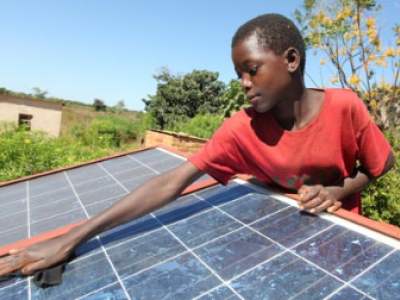
Adaptation to Climate Change in Coastal Zones of West Africa (ACCC)
The interconnected coastal and marine environment of Mauritania, Senegal, Gambia, Guinea Bissau, and Cape Verde is a highly productive ecosystem of significant marine biological diversity. It also underpins a significant portion of livelihood opportunities of the coastal communities. However, several assessments based on country specific National Communications to the UNFCCC, the second assessment of the Intergovernmental Panel on Climate Change as well as GEF-funded projects such as the African Process have concluded that widespread coastal erosion due to climate change is one of the most serious anticipated environmental problems facing the region.
This UNDP project, "Adaptation to Climate Change: Responding to Shoreline Change and its human dimensions in West Africa through integrated coastal area management" is implemented by the UNDP Country Office in Dakar and UNESCO/IOC. The project seeks to implement priority country-driven strategies to adapt to climate-induced coastline erosion within the framework of integrated coastal area management planning. Through a combination of demonstration projects, integration of climate change into coastal management policies, capacity building initiatives including training, stakeholder consultations, climate and coastline erosion monitoring mechanisms, as well as the promotion of regional cooperation, this project will bolster ecosystem resiliency to climate change along the Canary Current coastline.
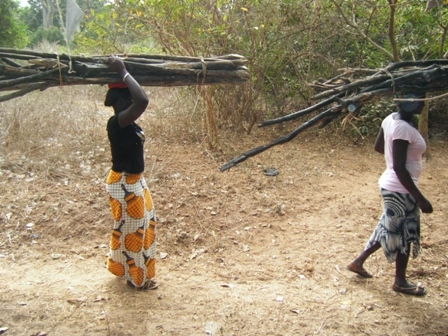
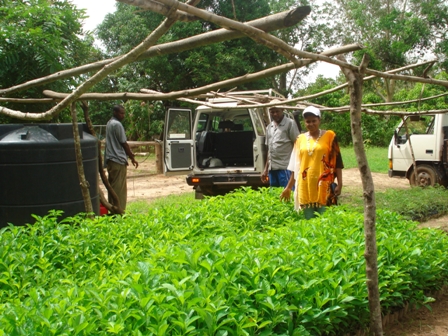
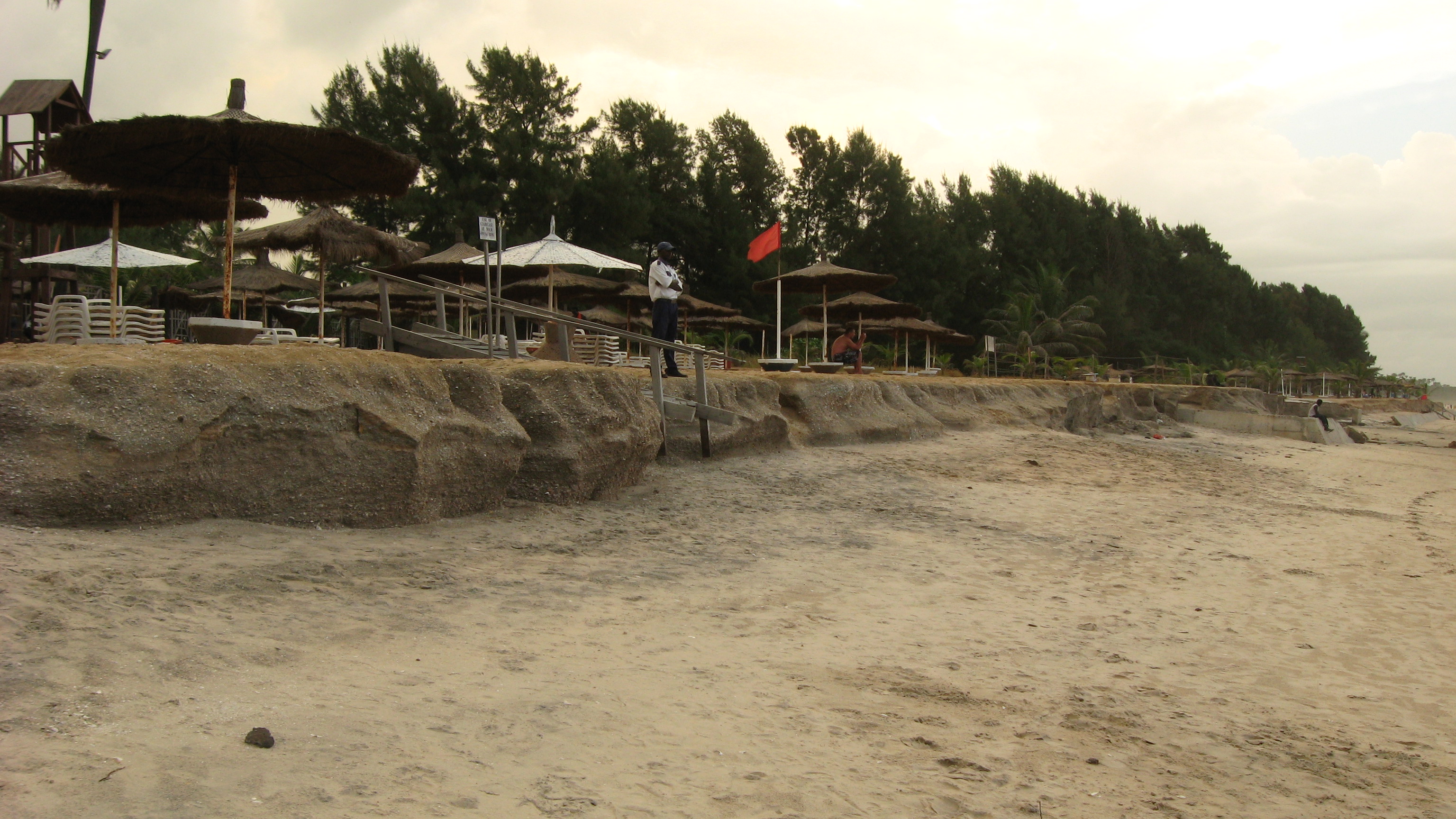

ProDocs
UNDP Project Document: Adaptation to Climate Change in Coastal Zones of West Africa (ACCC), 18 July 2007
Letter of Endorsement and Commitment Letter - 29 September 2004
Re-Submission WAF - Project Document - 24 April 2006 - Part 2
Re-Submission WAF - Project Document - 24 April 2006 - Part 1
Request for CEO Endorsement - Under the GEF Trust Fund (SPA)
PDF/PPG Status Report: Adaptation to Climate Change in Coastal Zones of West Africa - 12 June 2007
Training & Tools
USAID Adapting to Coastal Climate Change - A Guidebook for Development Planners - May 2009
Project Brief / Fact Sheet
Coastal erosion and the Adaptation to Climate Change in Coastal Zones of West Africa project - Niang, 2012
L'adaptation au changement climatique dans les zones côtières en Afrique de l'Ouest: un programme du FEM
Board Meeting Reports
Rapport de l'atelier régional de formation sur les changements climatiques et zones côtières - Dakar, 23-26 avril 2009
Rapport de l'atelier régional sur les techniques de restauration des mangroves - Saly (Mbour), du 27 au 30 avril 2009
Quarterly Updates
Plan de travail et budget 2010 pour les composantes régionales
The project understands the risks that climate change poses to conservation efforts intended to sustain fisheries. The specific actions that the project is undertaking includes: country-specific coastal erosion assessments, consultations with stakeholders to identify exitisting strategies and capacities to address the problem of erosion, the selection of promising strategies (and implemented at pilot test sites), to monitor the results, and to disseminate lessons learned. “Strategies” include both adaptation actions (e.g., mangrove reforestation) and capacity-buildling (e.g., awareness-raising). Findings from the pilot projects will be used to integrate climate change and adaptation issues into existing coastal management, to develop plans and policies that induce cooperation across sectors, to spur the creation or improvement of national policies that facilitate adaptation to climate change in coastal areas, to enhance regional cooperation in undertaking these challenges, and to establish a clearinghouse to store and disseminate lessons and best practices.
Other partner organizations (local, national and international):
- Ministère de l’Environnement et de la Protection de la Nature, Direction de l’Environnement et de la Protection de la Nature (Senegal)
- Ministère du Développement Rural et de l’Environnement, Direction de l’Environnement (Mauritanie)
- Ministerio dos Recursos Naturais, Direcçao Geral do Ambiente (Guinea Bissau)
- National Environment Agency (Gambia)
- Ministry of Environment and Agriculture, Direction Générale de l’Environnement (Cape Verde)
The overall objective of the Full Project is to mainstream adaptation to climate change into Integrated Coastal Area Management (ICAM) planning in the participating countries through the development and implementation of pilot adaptation activities in response to shoreline change. This will involve the development of strategies, policies and measures, based on technical/scientific information and appropriate policy instruments. A major preliminary objective will therefore be to pilot adaptation activities in a local to sub-regional context. There is a strong rationale for addressing the issue of adaptation and shoreline change not only at the national level but also through the development of a regional approach.
The ACCC project which is about adaptation to climate change in coastal countries of West Africa started in November 2008 by the regional inception meeting. Since then the main achievements of the project were: the installation of the regional and national teams; the organization of national inception meetings in 4 countries; the organization of 3 regional training workshops, one on climate change and coastal zones and two on technical aspects of mangrove restoration and dune stabilization; the new web site was launched.
Background
Climate change scenarios for the West African region include an anticipated increase in mean surface temperature of up to 0.5º C per decade, increased evapotranspiration, increased rainfall variability and intensity, accelerated sea level rise of around 1 m per century, any reduced coastal upwelling resulting from weakening of the Azores high and the trade winds, exacerbated by disruption from freshwater plumes of continental origin (for additional details, refer to Annex A3). The resultant shifts in the hydro-graphical and oceanic conditions due to climate change are likely to exacerbate coastal erosion and sedimentation problems in the West African region (Allersman and Tilsmans 1993 – quoted in Africa Environmental Outlook (2000).
As all five countries are within the Canary Current Large Marine Ecosystem (and thereby aligned across an important environmental transition which is likely to be modified by sea level rise and climate change), a coastwise shift in climatic, hydro-graphical and oceanic conditions northward along the coast with global warming will be better identified and addressed by each of these countries if they understand features and processes in neighbouring state (as highlighted by Eric Bird during the STAP review of this proposal).
This project is designed to foster such a collaborative effort by implementing a series of activities that lead to the improvement in the adaptive capacity to climate change of sensitive coastline ecosystems in the five countries. At the heart of the project is a combination of community based demonstration projects and UNDP & UNESCO led support to facilitate and build capacity to foster national level integration of policies that promote adaptive capacity to climate change of coastline ecosystems.
Overall Project Objective: Develop and pilot a range of effective coping mechanisms for reducing the impact of climate change induced coastal erosion in vulnerable regions in five countries in West Africa.
- Outcome 1: Pilot activities to increase he adaptive capacity and resilience of coastal ecosystems in regions vulnerable to climate change impacts implemented
- Outcome 2: Climate change and adaptation issues and coastal area management policies and programmes integrated
- Outcome 3:Monitoring of coastal erosion and capacity building in coastal management and planning enhanced
- Outcome 4: Learning, Evaluation and Adaptative management increased
Project monitoring and evaluation wa conducted in accordance with established UNDP and GEF procedures and will be provided by the project team and the UNDP Country Office (UNDP-CO) with support from UNDP/GEF. Monitoring and Evaluation Plan provides for a series of linked activities, including annual Project Implementation Reviews (PIR), Tripartite Reviews, Quarterly Project Reports, Work Plans, and independent mid-term and final project Evaluations. A novel feature of the monitoring strategy is that it provides for Program level monitoring, to ensure that project synergies are being realized, and activities dovetailed as planned.
Project Start:
Project Inception Workshop: held within the first 2 months of project start with those with assigned roles in the project organization structure, UNDP country office and where appropriate/feasible regional technical policy and programme advisors as well as other stakeholders. The Inception Workshop is crucial to building ownership for the project results and to plan the first year annual work plan.
Daily:
Day to day monitoring of implementation progress: will be the responsibility of the Project Manager, based on the project's Annual Work Plan and its indicators, with overall guidance from the Project Director. The Project Team will inform the UNDP-CO of any delays or difficulties faced during implementation so that the appropriate support or corrective measures can be adopted in a timely and remedial fashion.
Quarterly:
Project Progress Reports (PPR): quarterly reports will be assembled based on the information recorded and monitored in the UNDP Enhanced Results Based Management Platform. Risk analysis will be logged and regularly updated in ATLAS.
Annually:
Annual Project Review/Project Implementation Reports (APR/PIR): This key report is prepared to monitor progress made since project start and in particular for the previous reporting period (30 June to 1 July). The APR/PIR combines both UNDP and GEF reporting requirements.
Periodic Monitoring through Site Visits:
UNDP CO and the UNDP RCU will conduct visits to project sites based on the agreed schedule in the project's Inception Report/Annual Work Plan to assess first hand project progress. Other members of the Project Board may also join these visits. A Field Visit Report/BTOR will be prepared by the CO and UNDP RCU and will be circulated no less than one month after the visit to the project team and Project Board members.
Mid-Term of Project Cycle:
Mid-Term Evaluation: will determine progress being made toward the achievement of outcomes and will identify course correction if needed. It will focus on the effectiveness, efficiency and timeliness of project implementation; will highlight issues requiring decisions and actions; and will present initial lessons learned about project design, implementation and management. Findings of this review will be incorporated as recommendations for enhanced implementation during the final half of the project's term.
End of Project:
Final Evaluation: will take place three months prior to the final Project Board meeting and will be undertaken in accordance with UNDP and GEF guidance. The final evaluation will focus on the delivery of the project’s results as initially planned (and as corrected after the mid-term evaluation, if any such correction took place). The final evaluation will look at impact and sustainability of results, including the contribution to capacity development and the achievement of global environmental benefits/goals. The Terminal Evaluation should also provide recommendations for follow-up activities.
Project Terminal Report: This comprehensive report will summarize the results achieved (objectives, outcomes, outputs), lessons learned, problems met and areas where results may not have been achieved. It will also lie out recommendations for any further steps that may need to be taken to ensure sustainability and replicability of the project's results.
Learning and Knowledge Sharing:
Results from the project will be disseminated within and beyond the project intervention zone through existing information sharing networks and forums.
The project will identify and participate, as relevant and appropriate, in scientific, policy-based and/or any other networks, which may be of benefit to project implementation though lessons learned. The project will identify, analyze, and share lessons learned that might be beneficial in the design and implementation of similar future projects.

